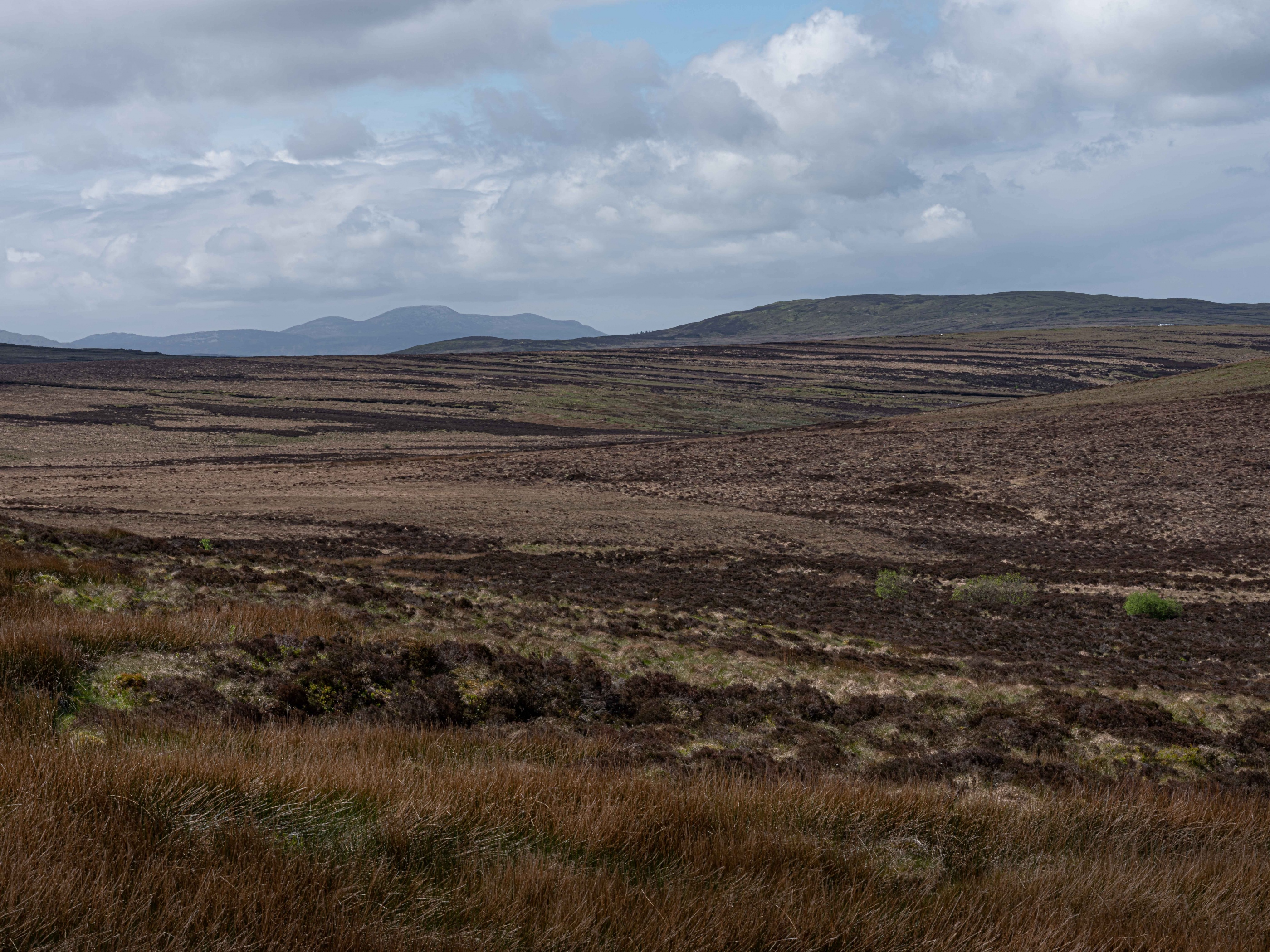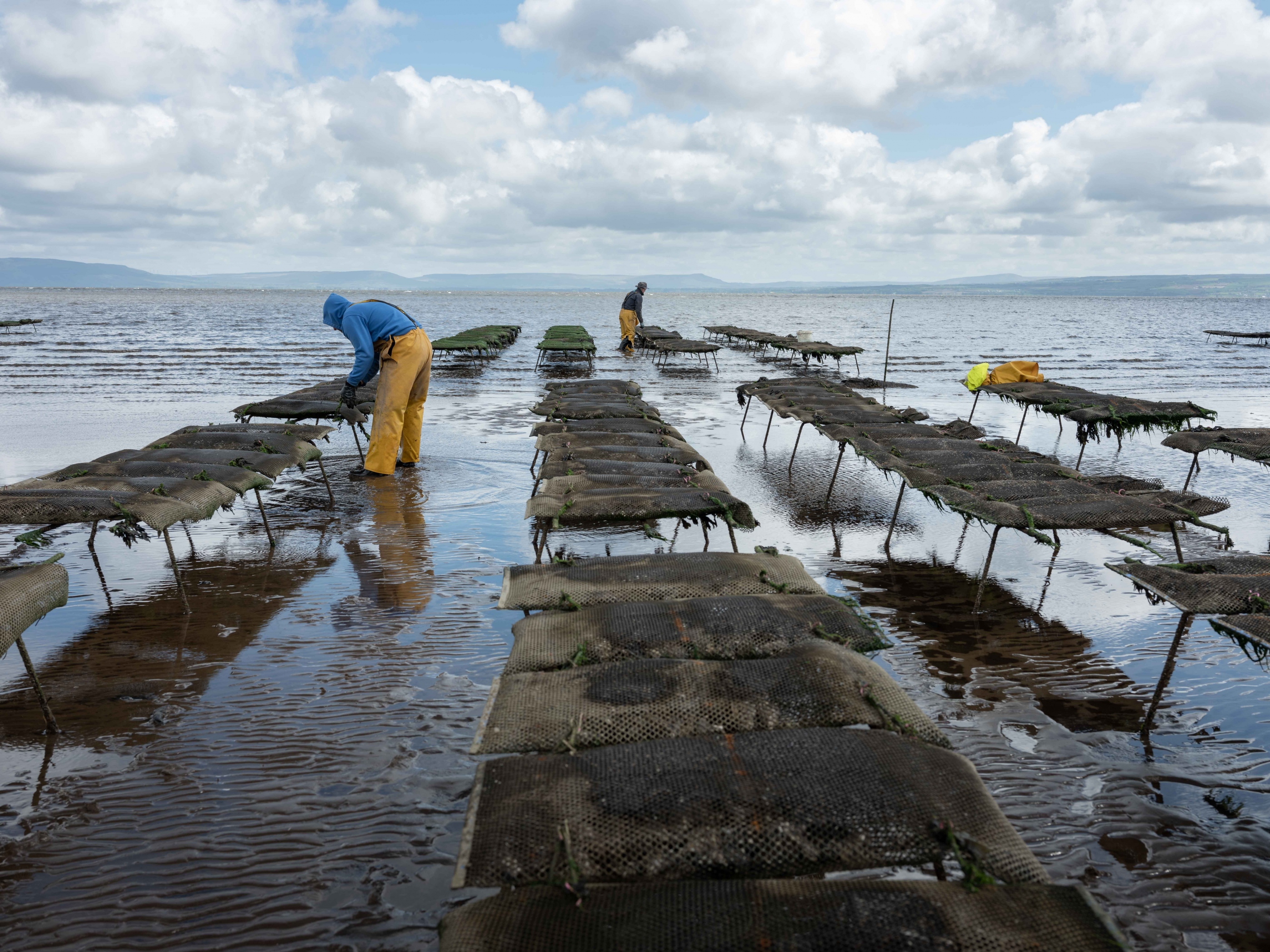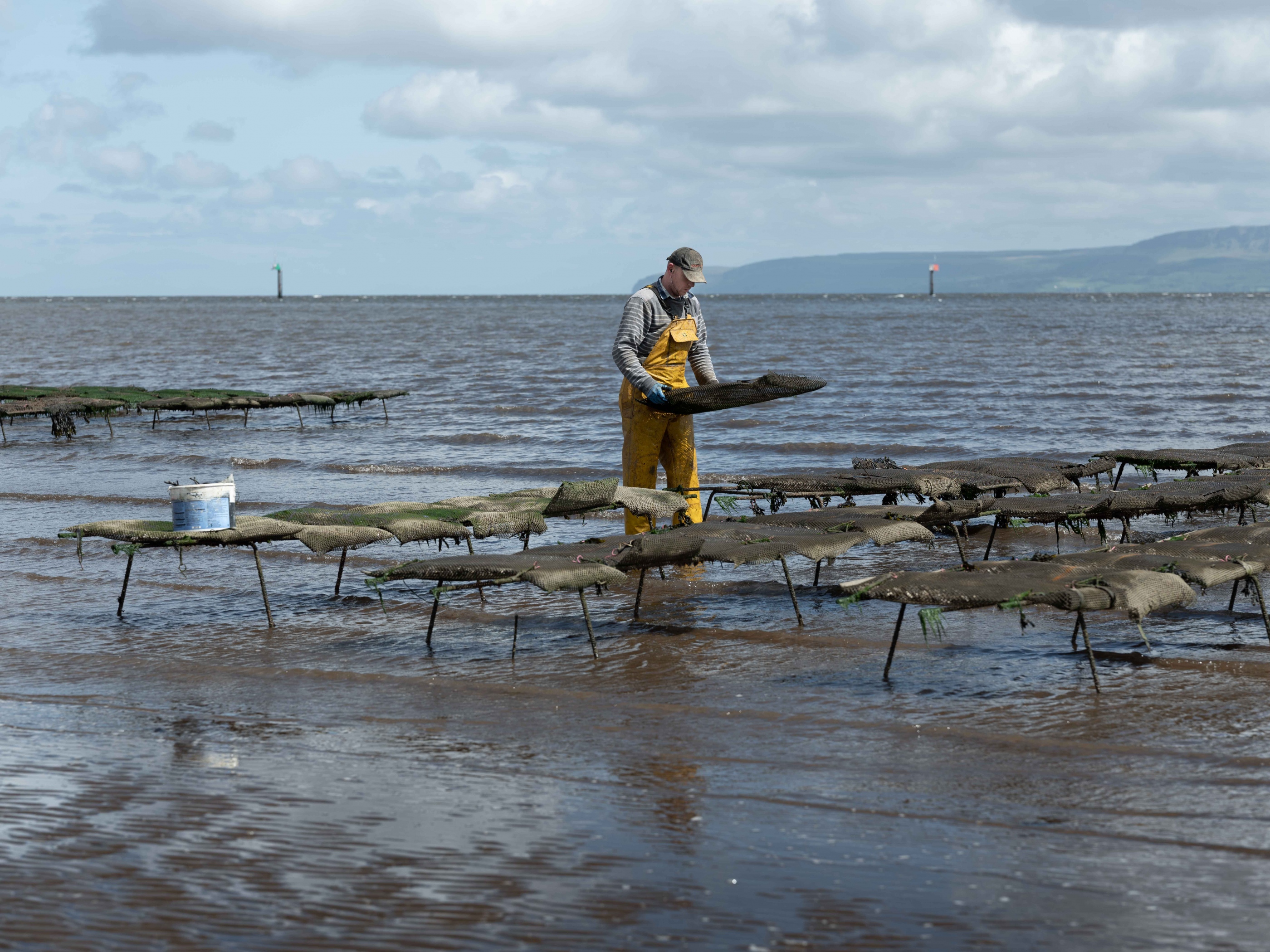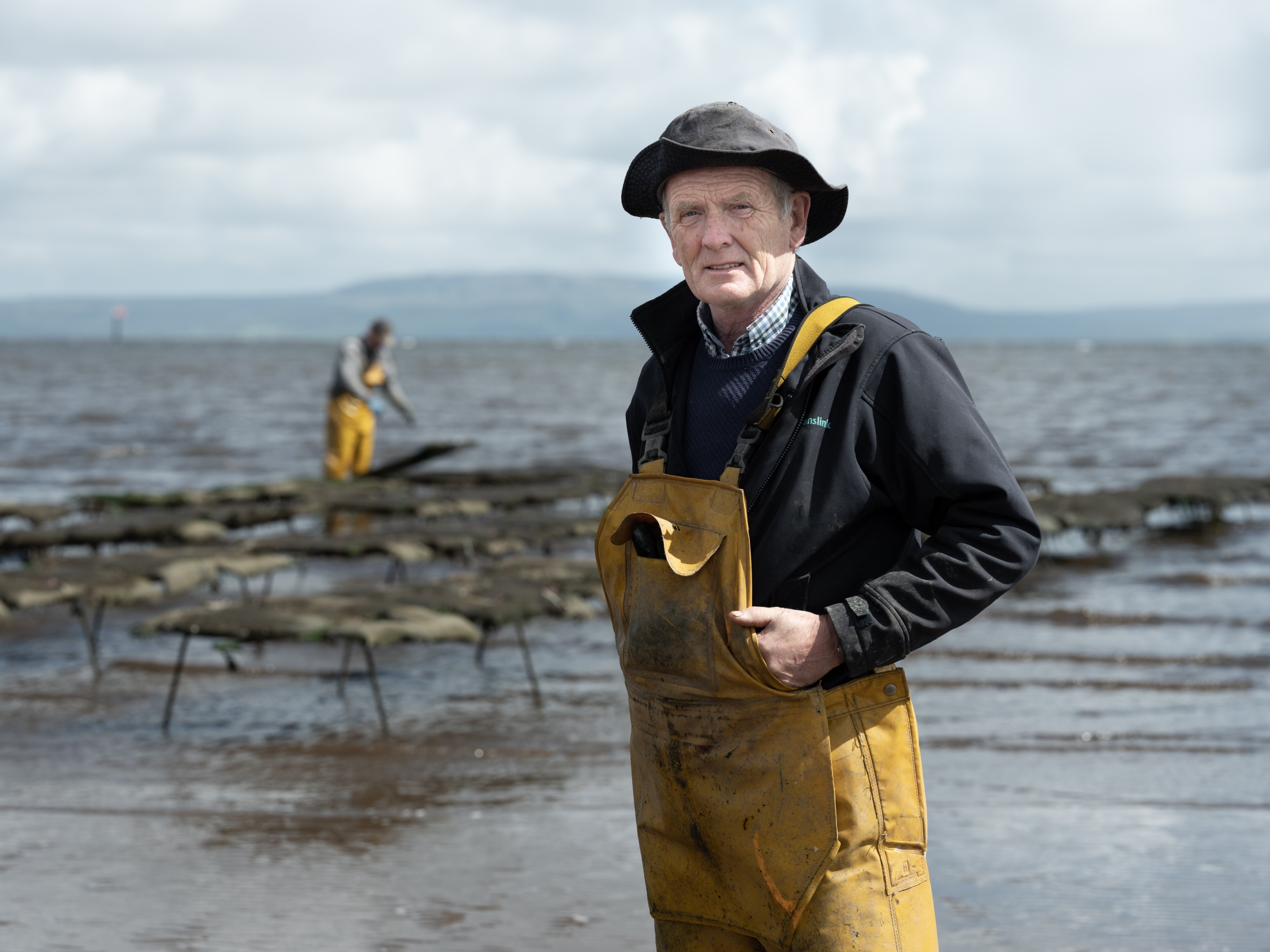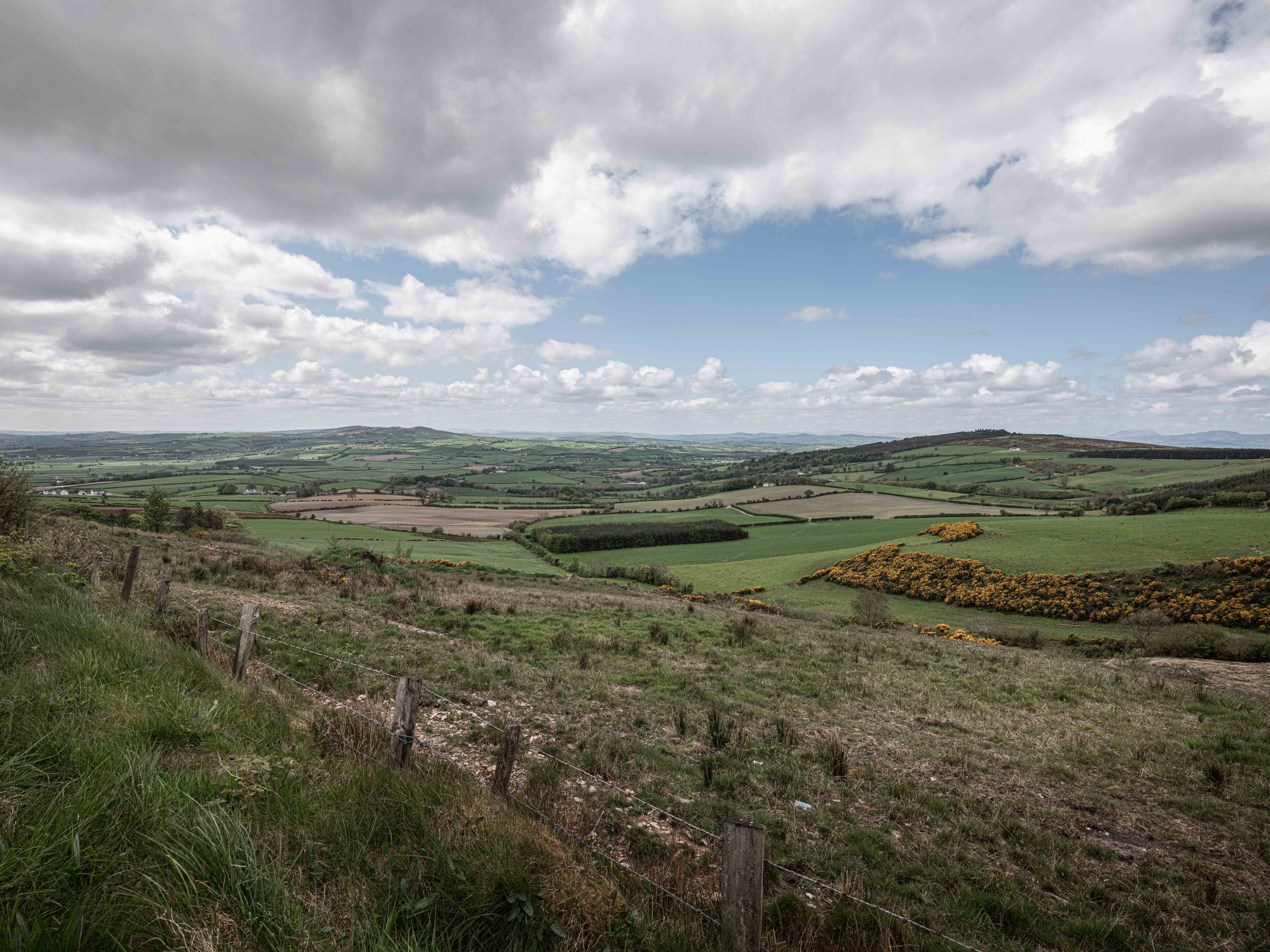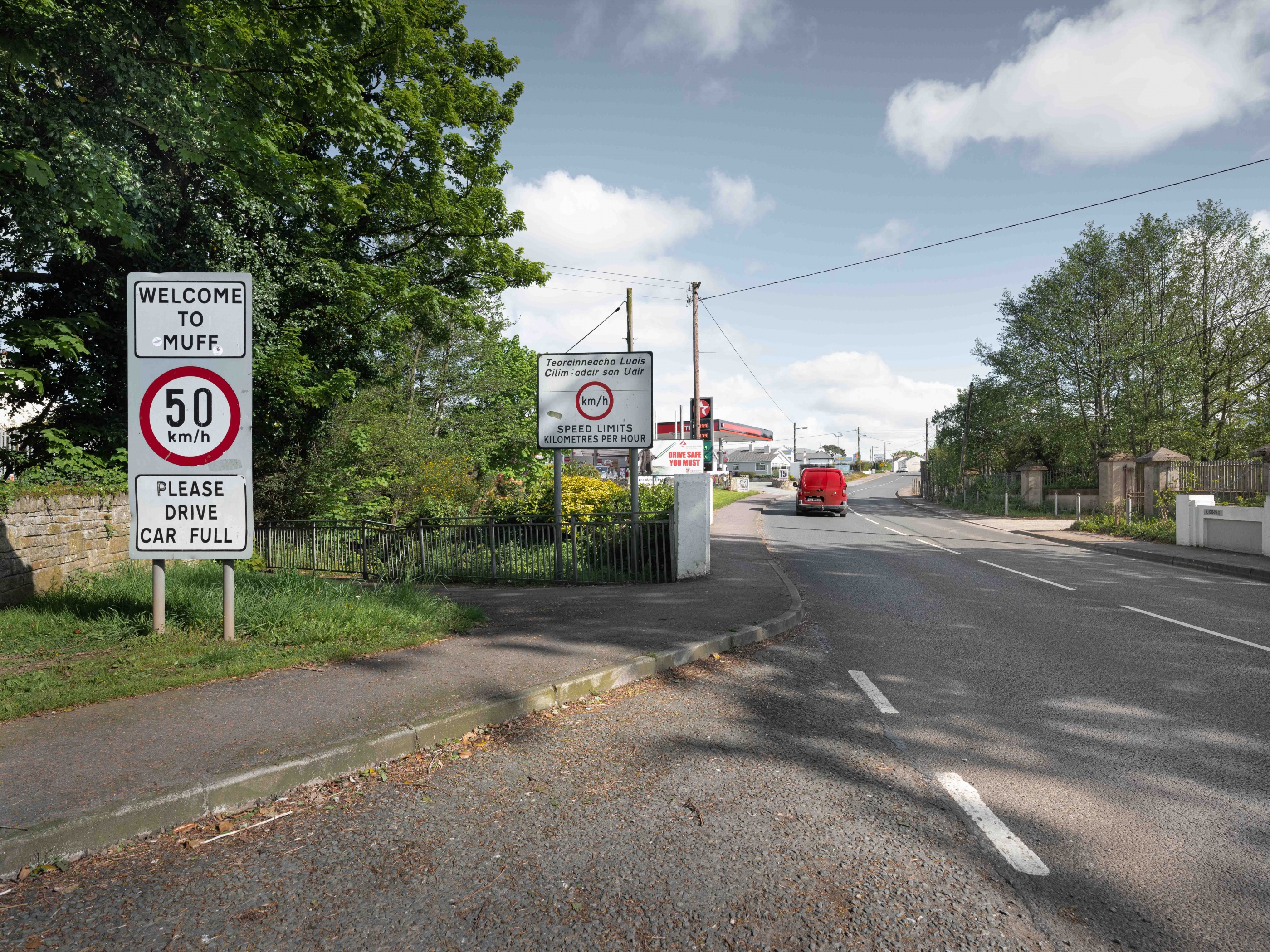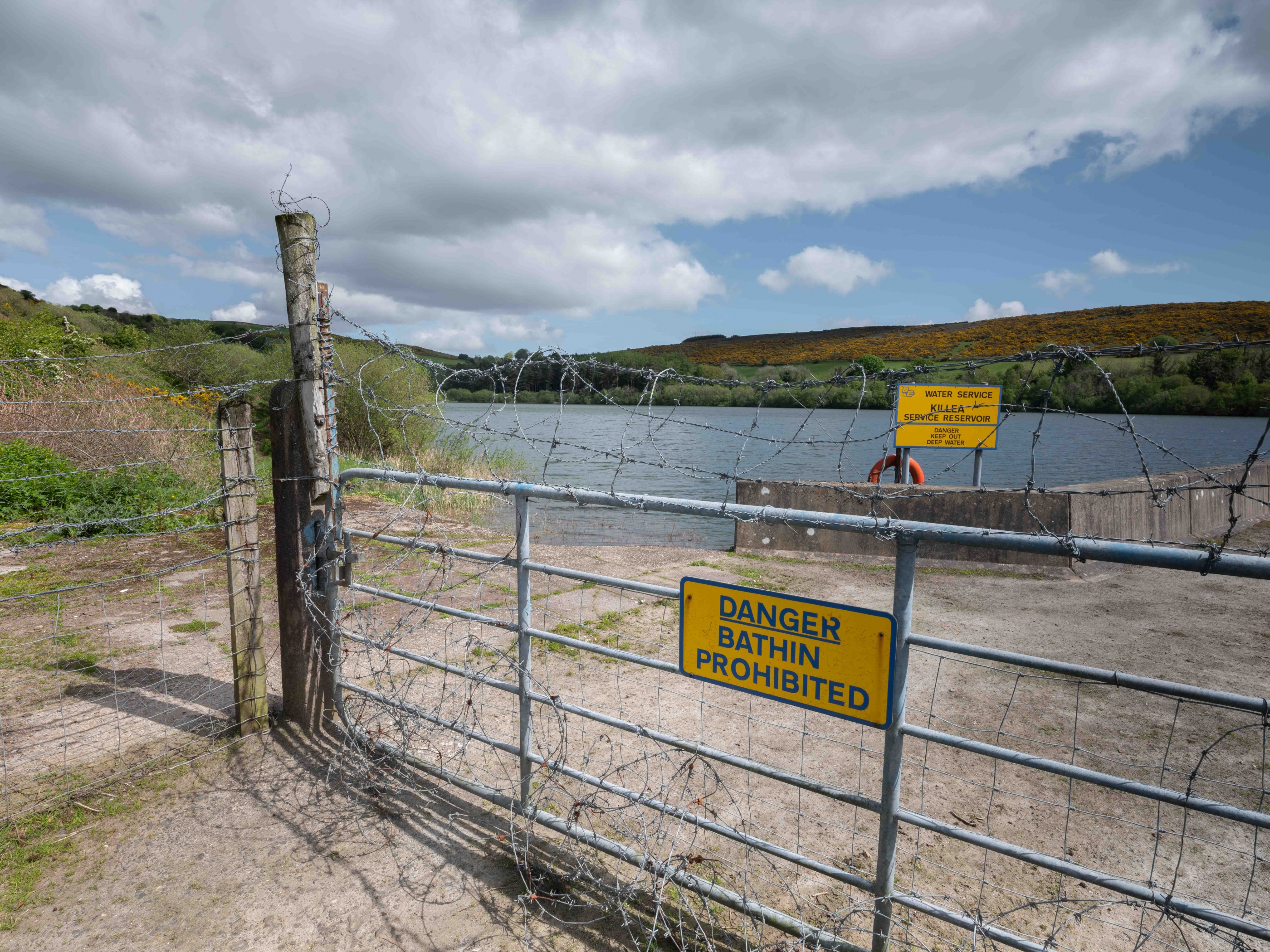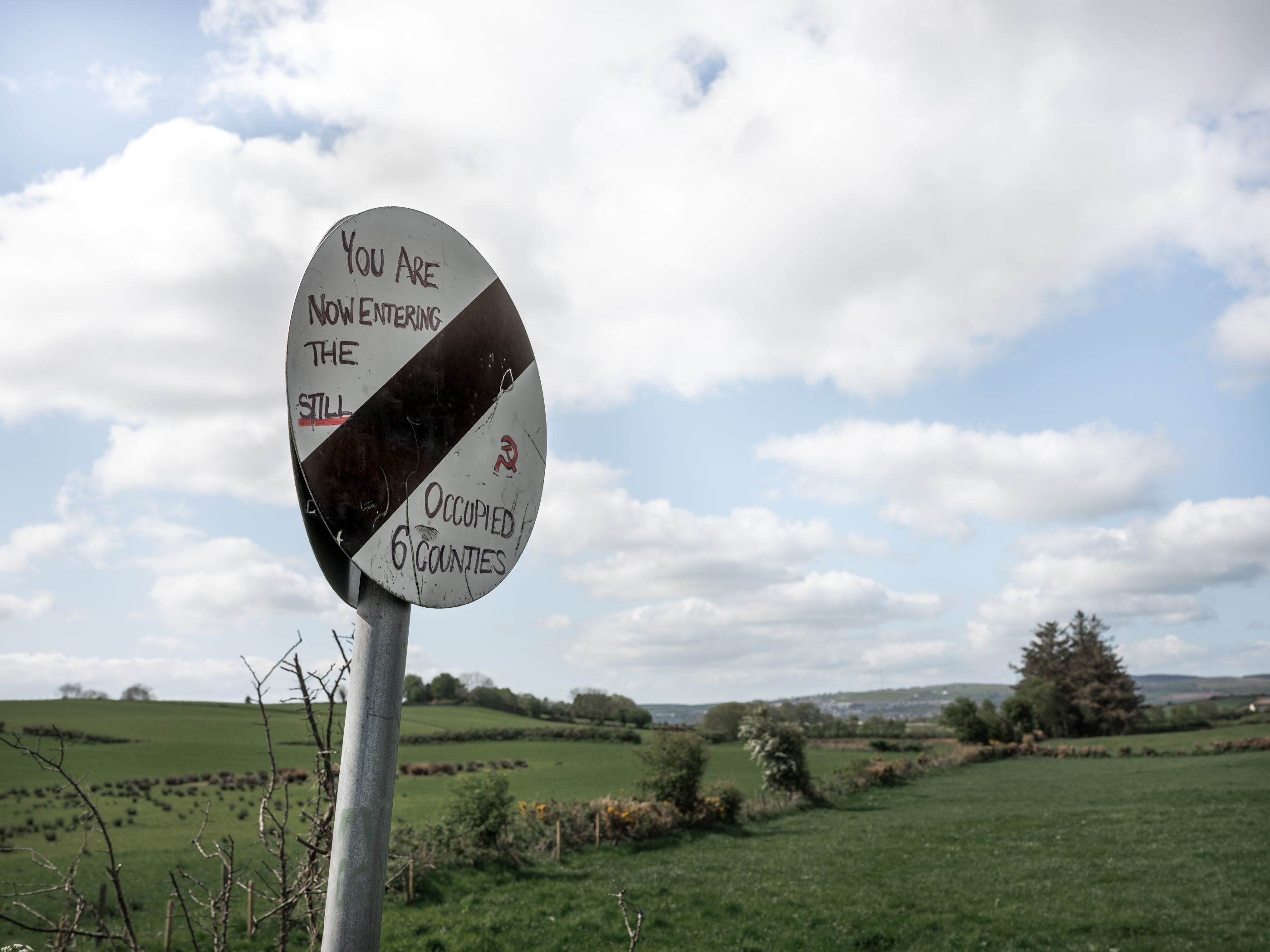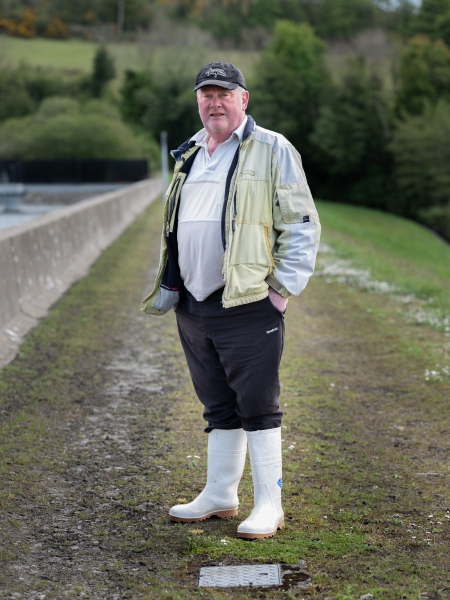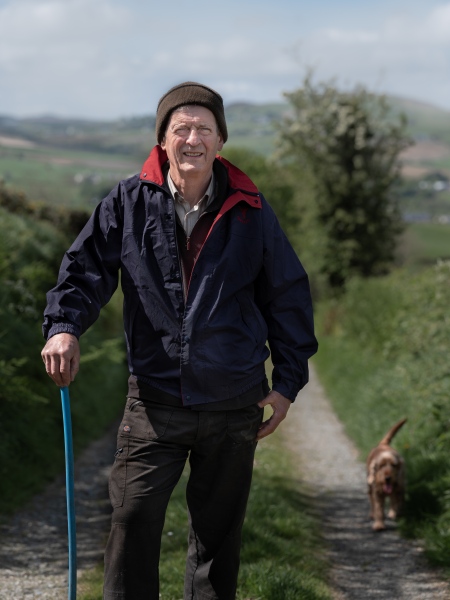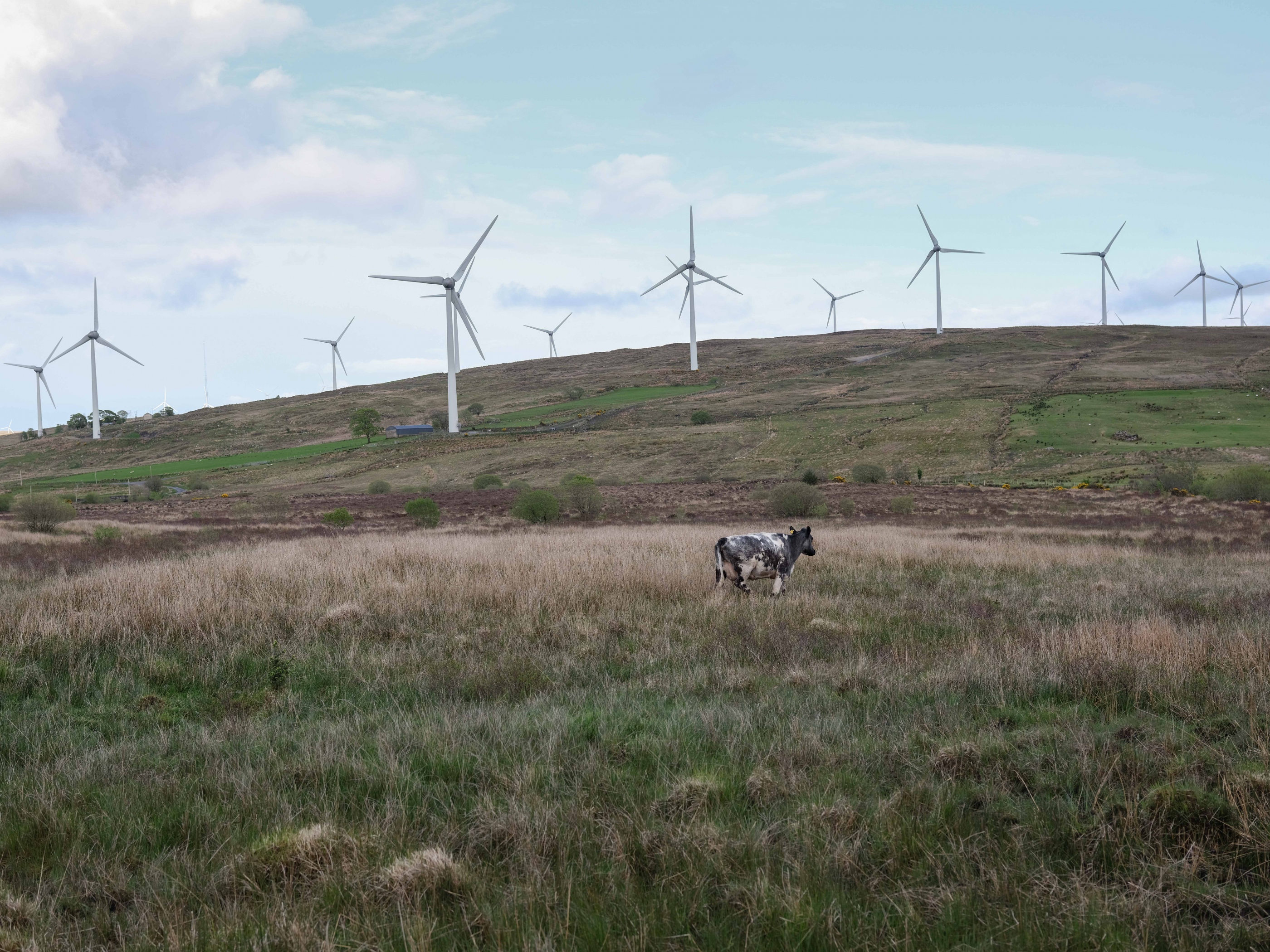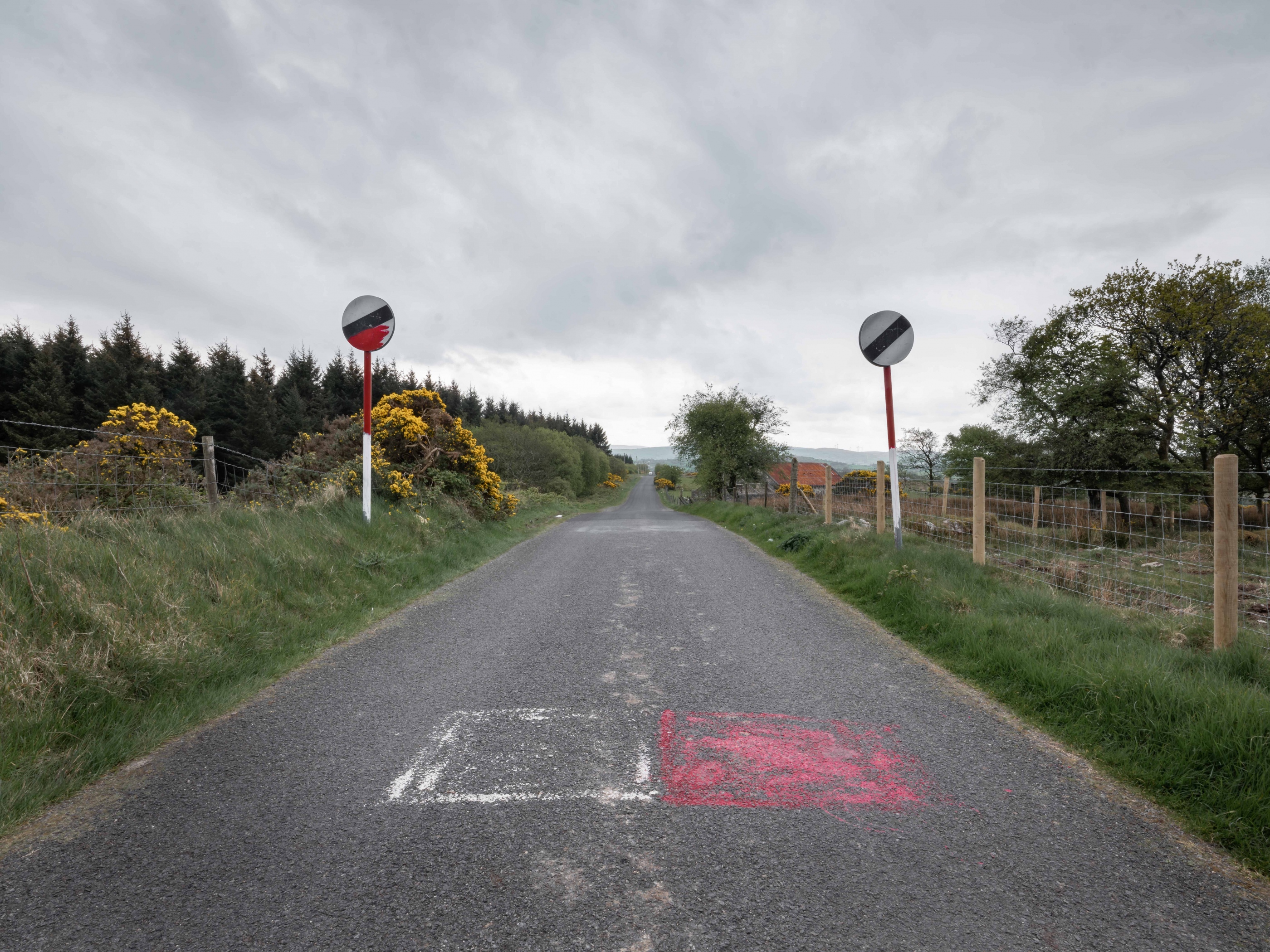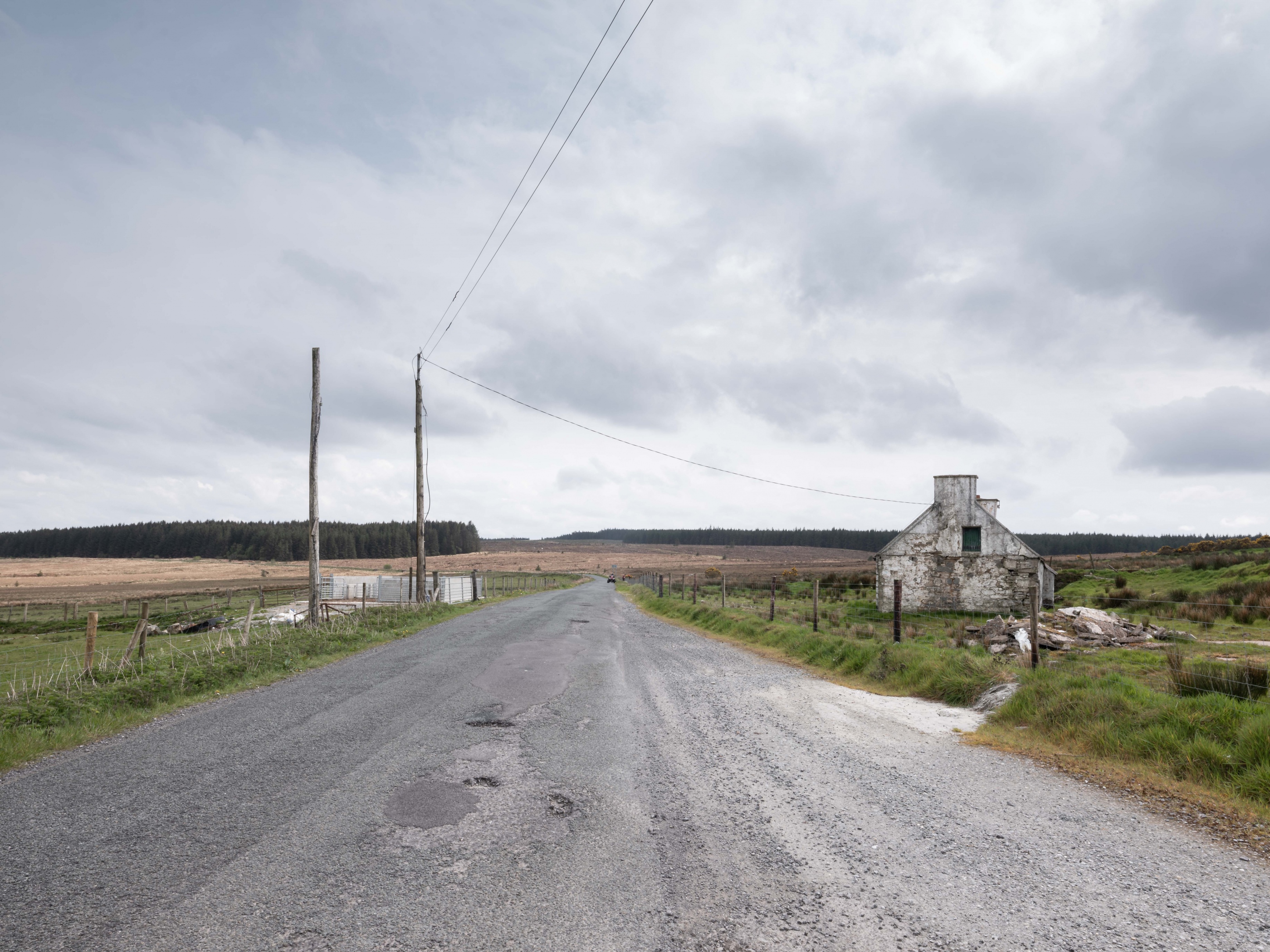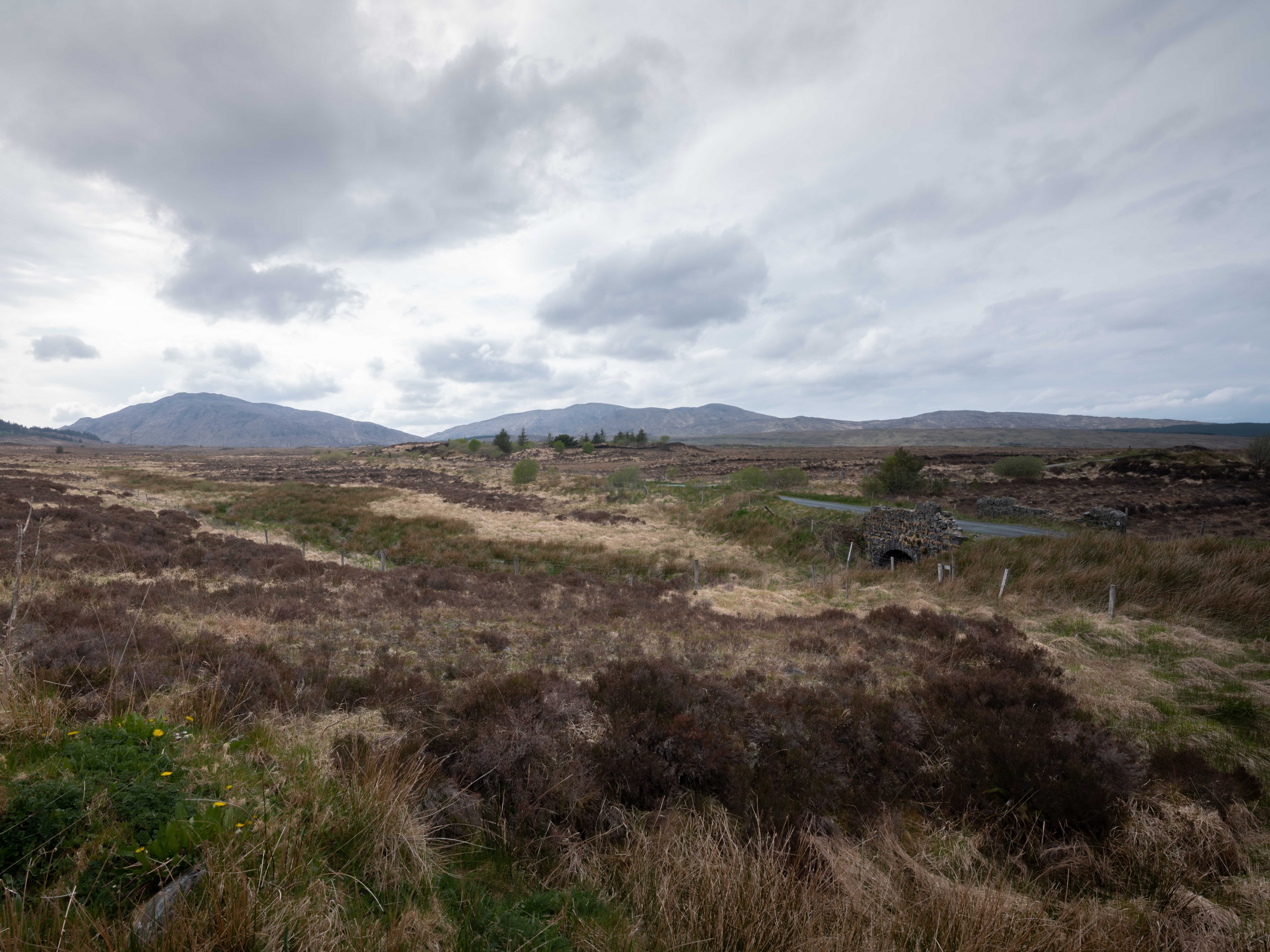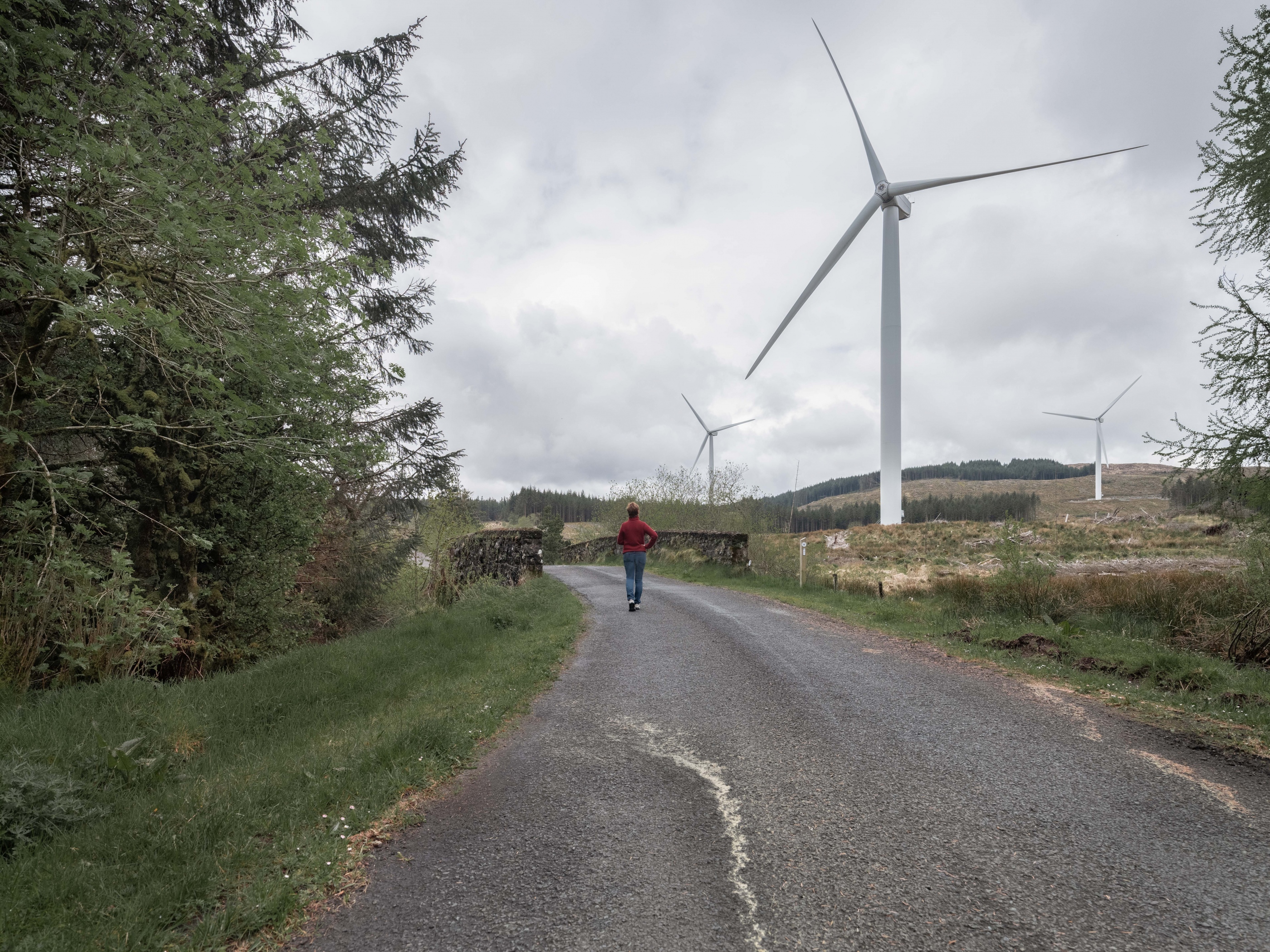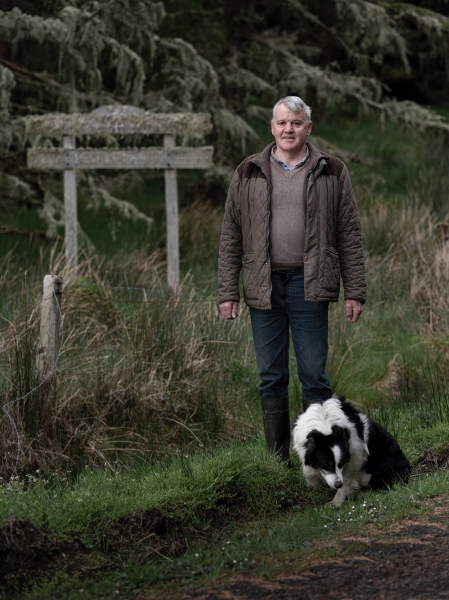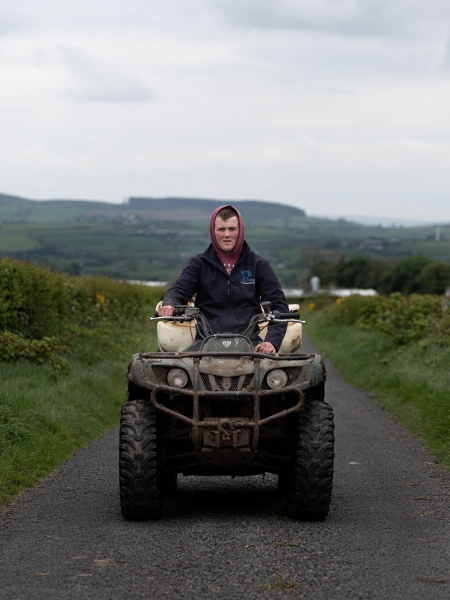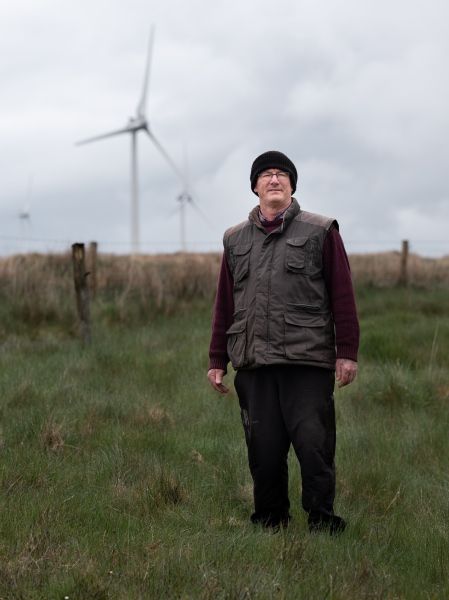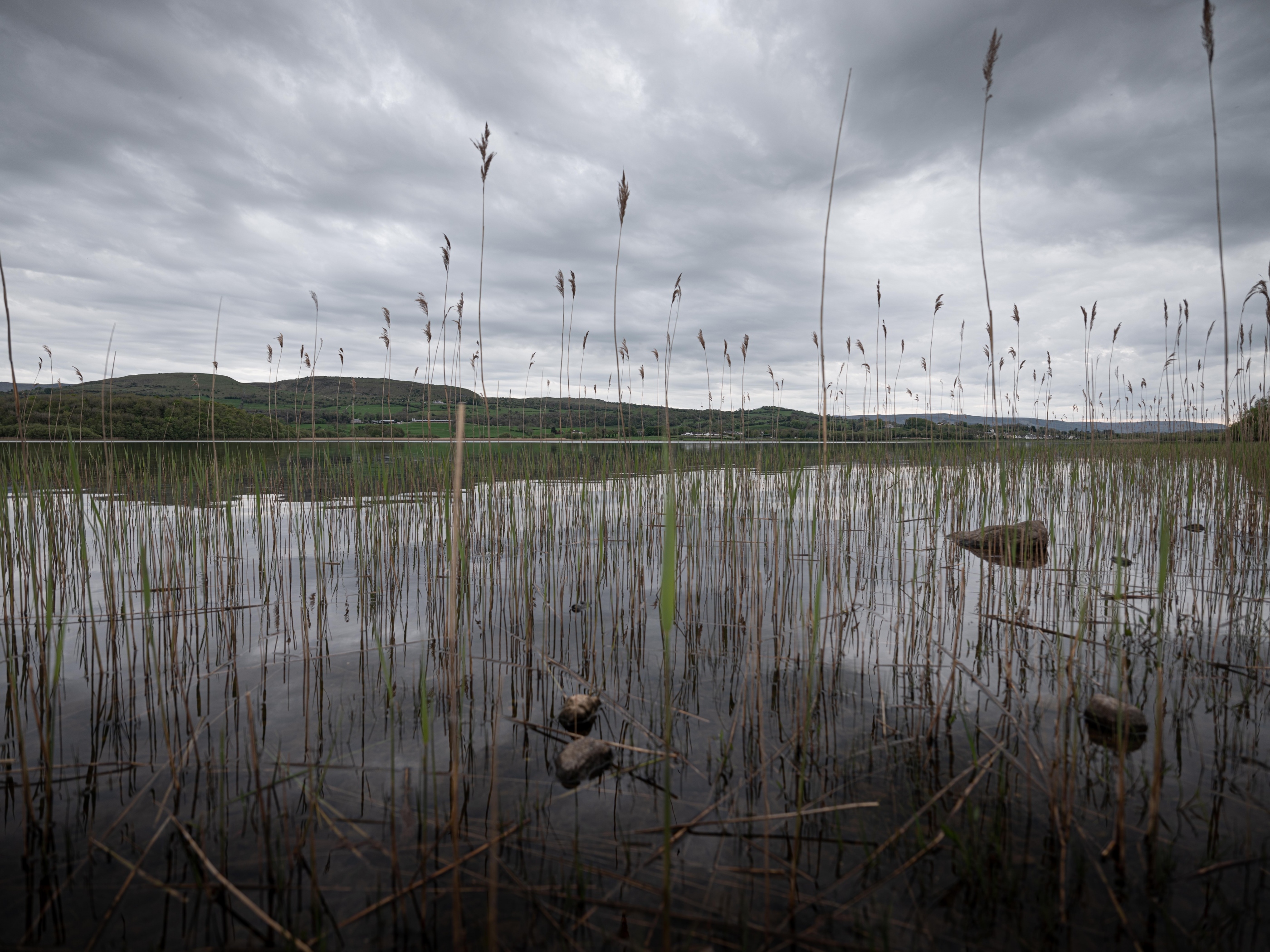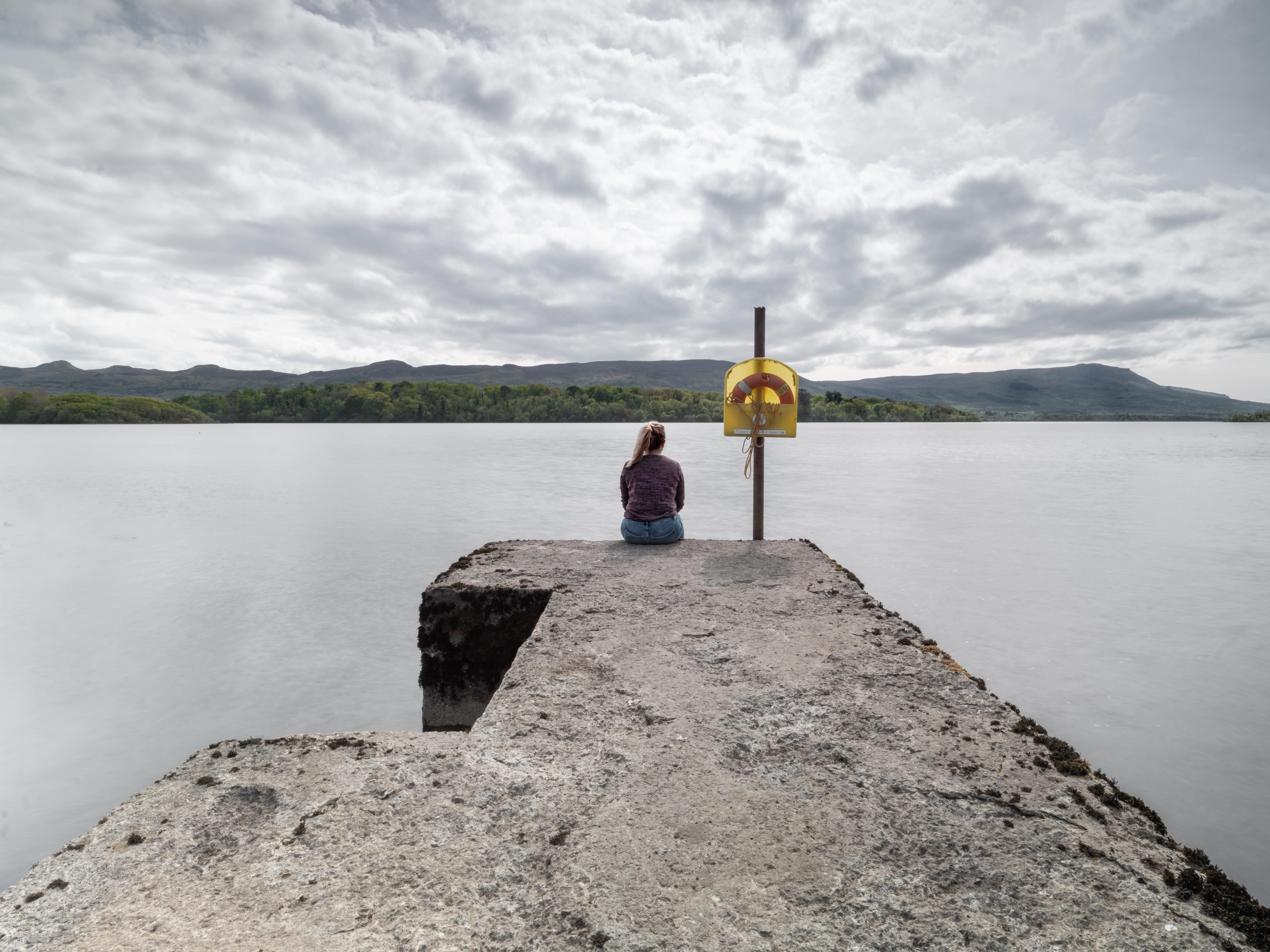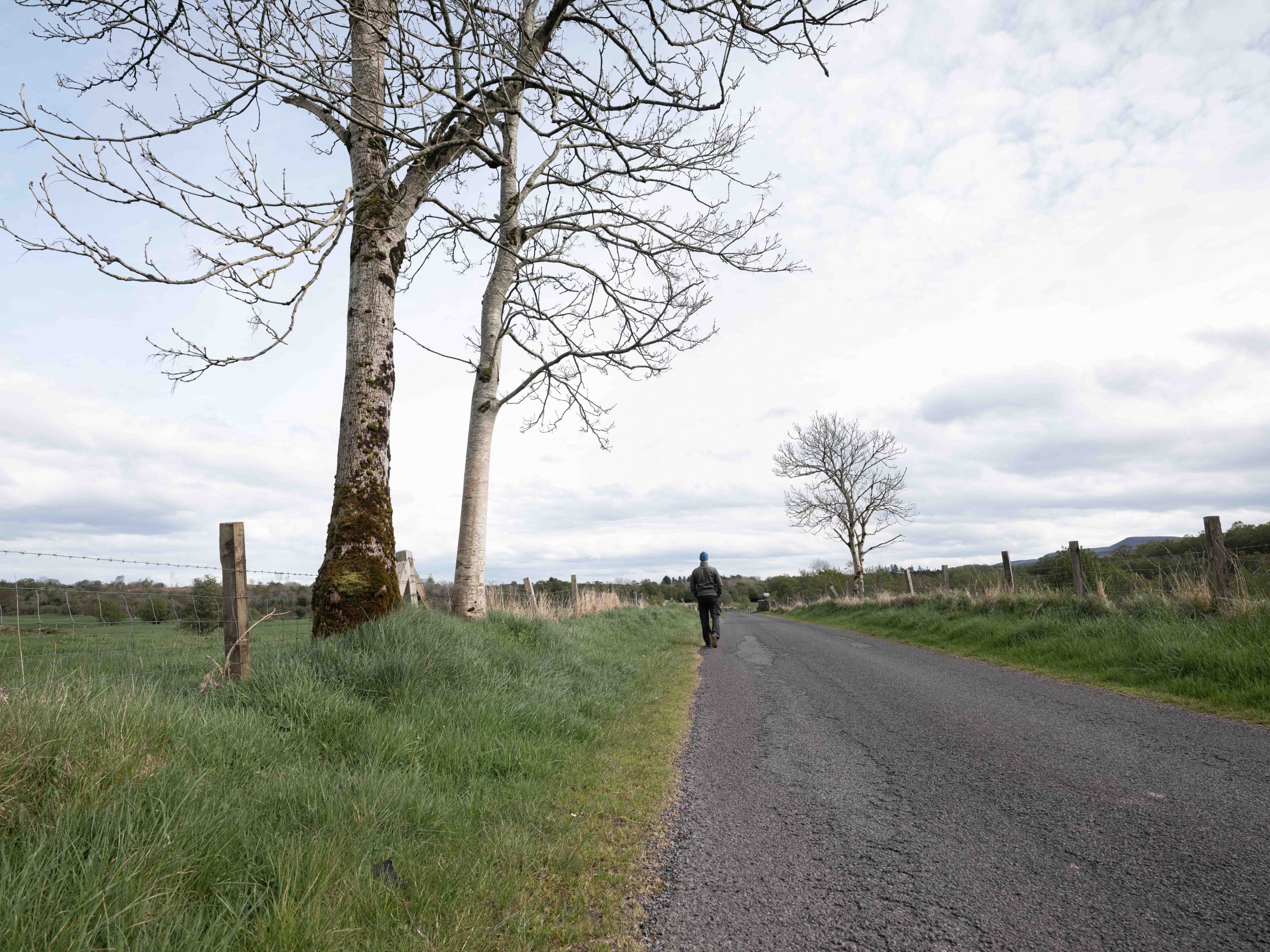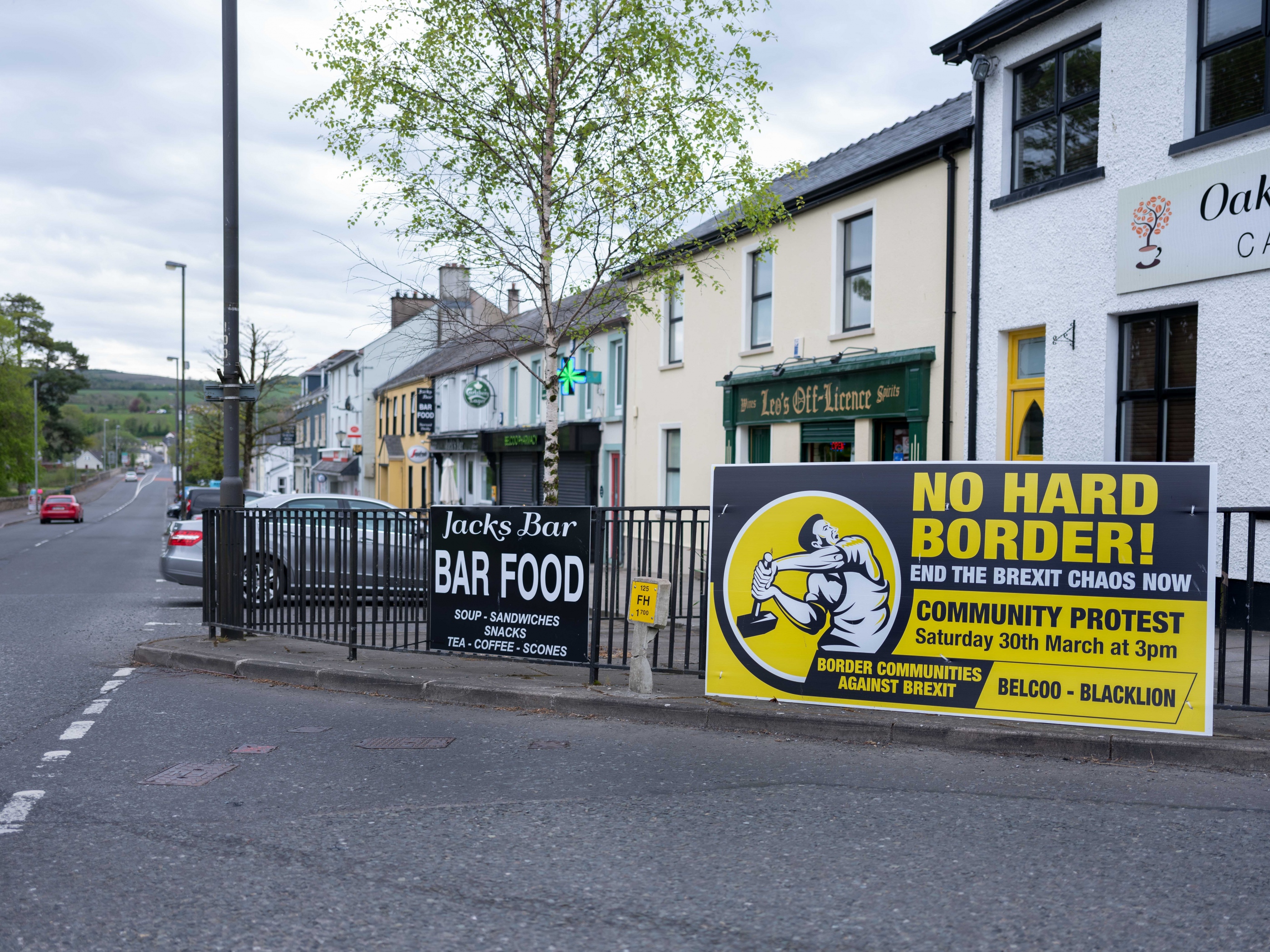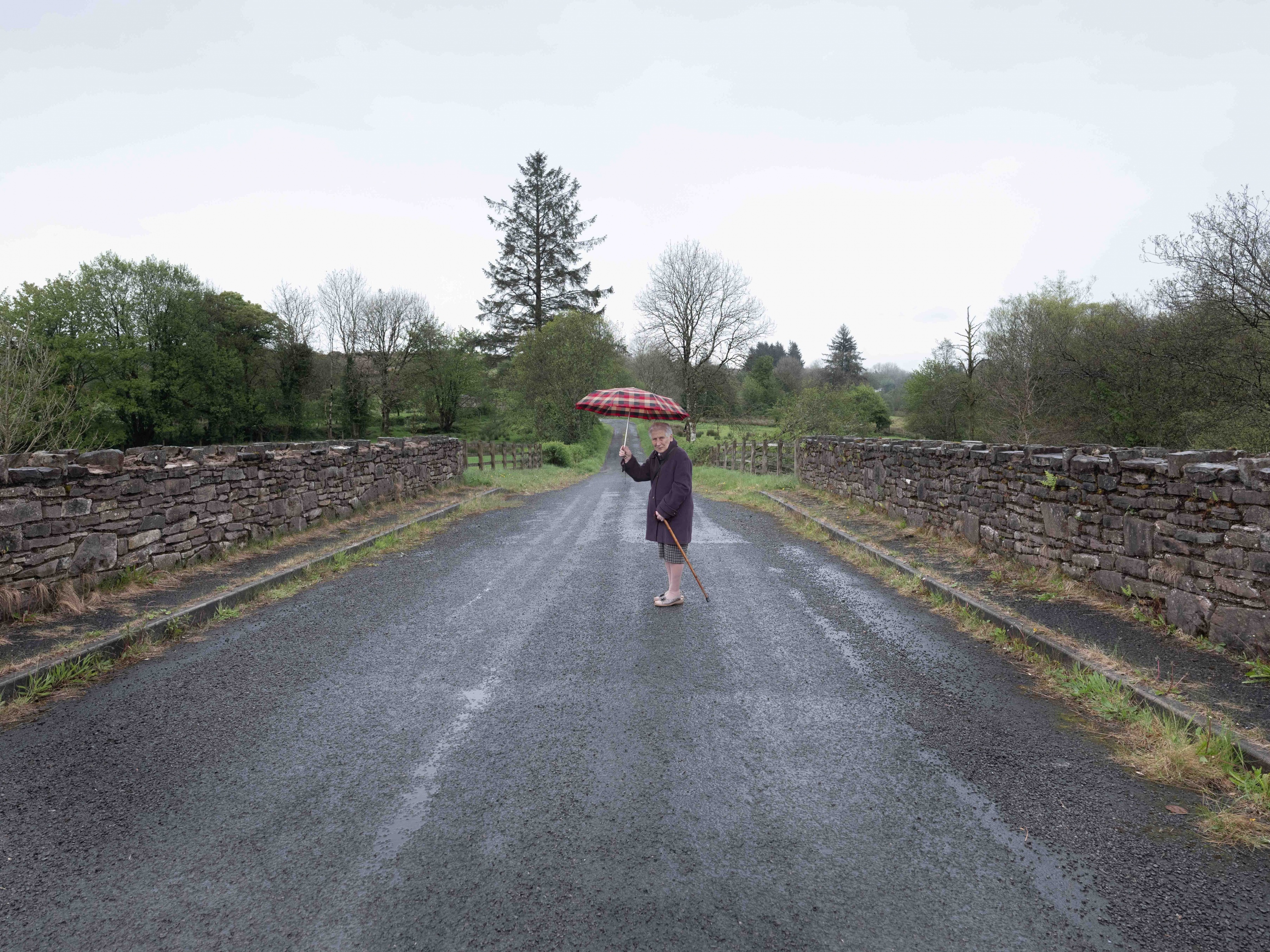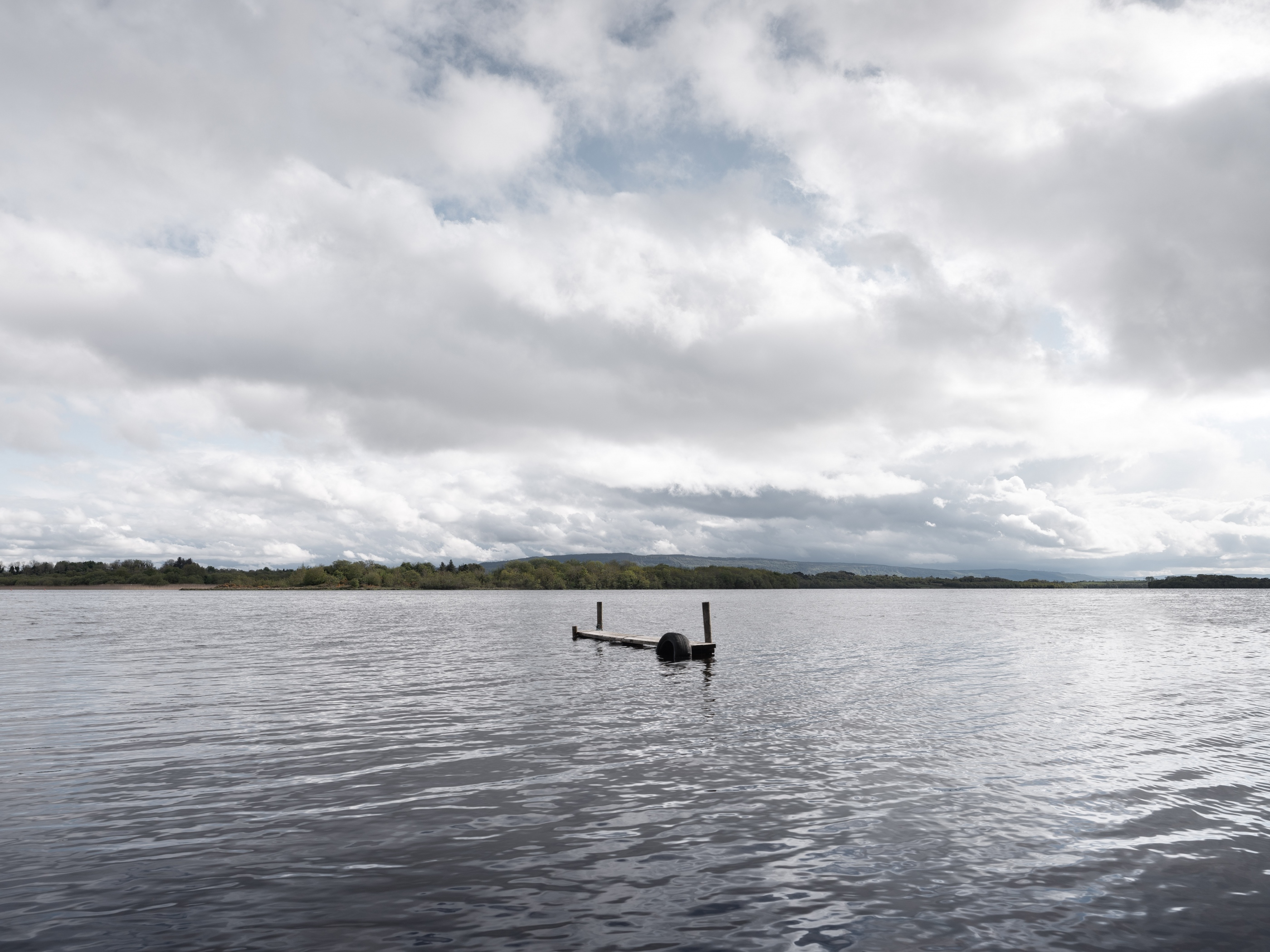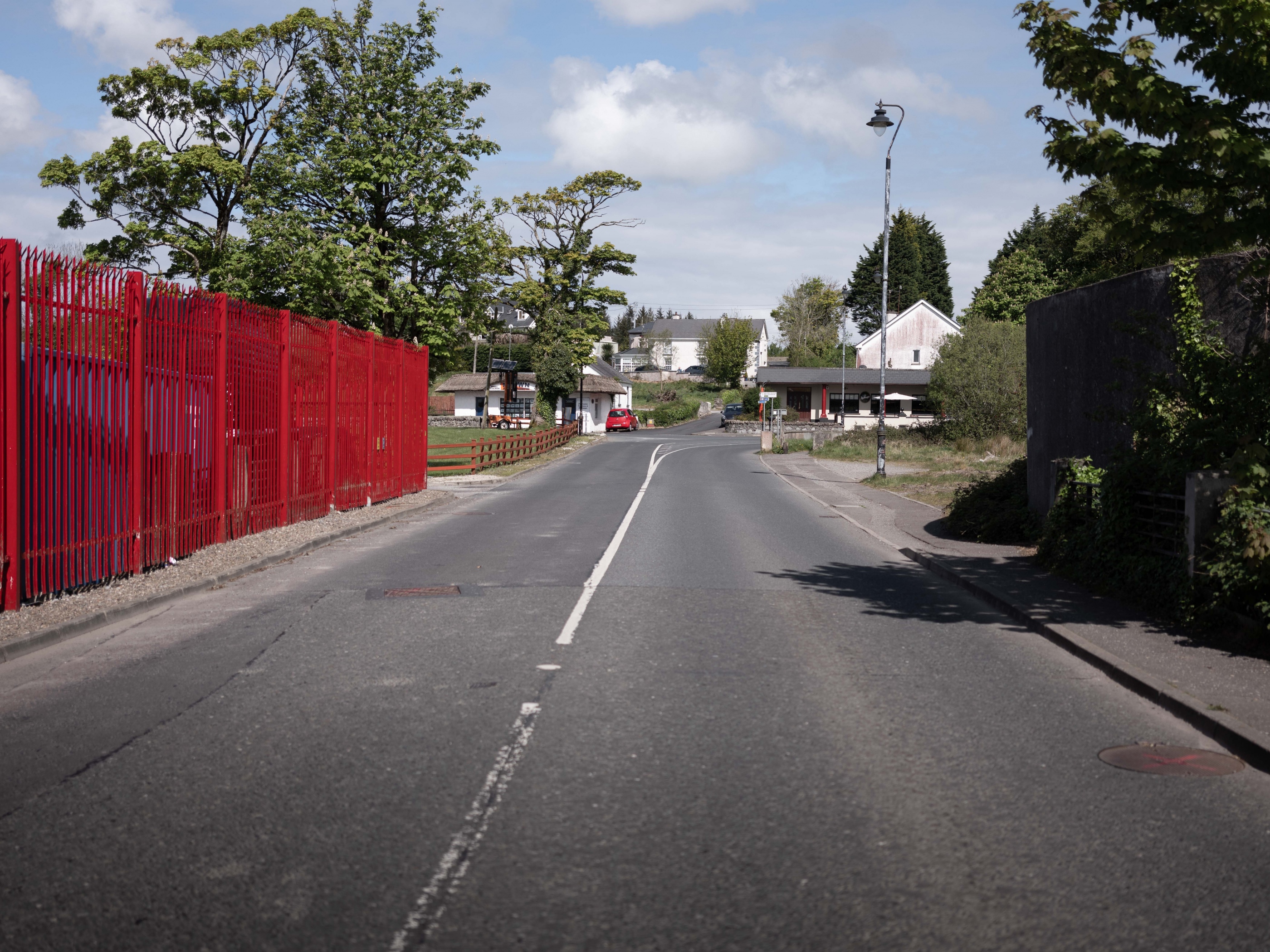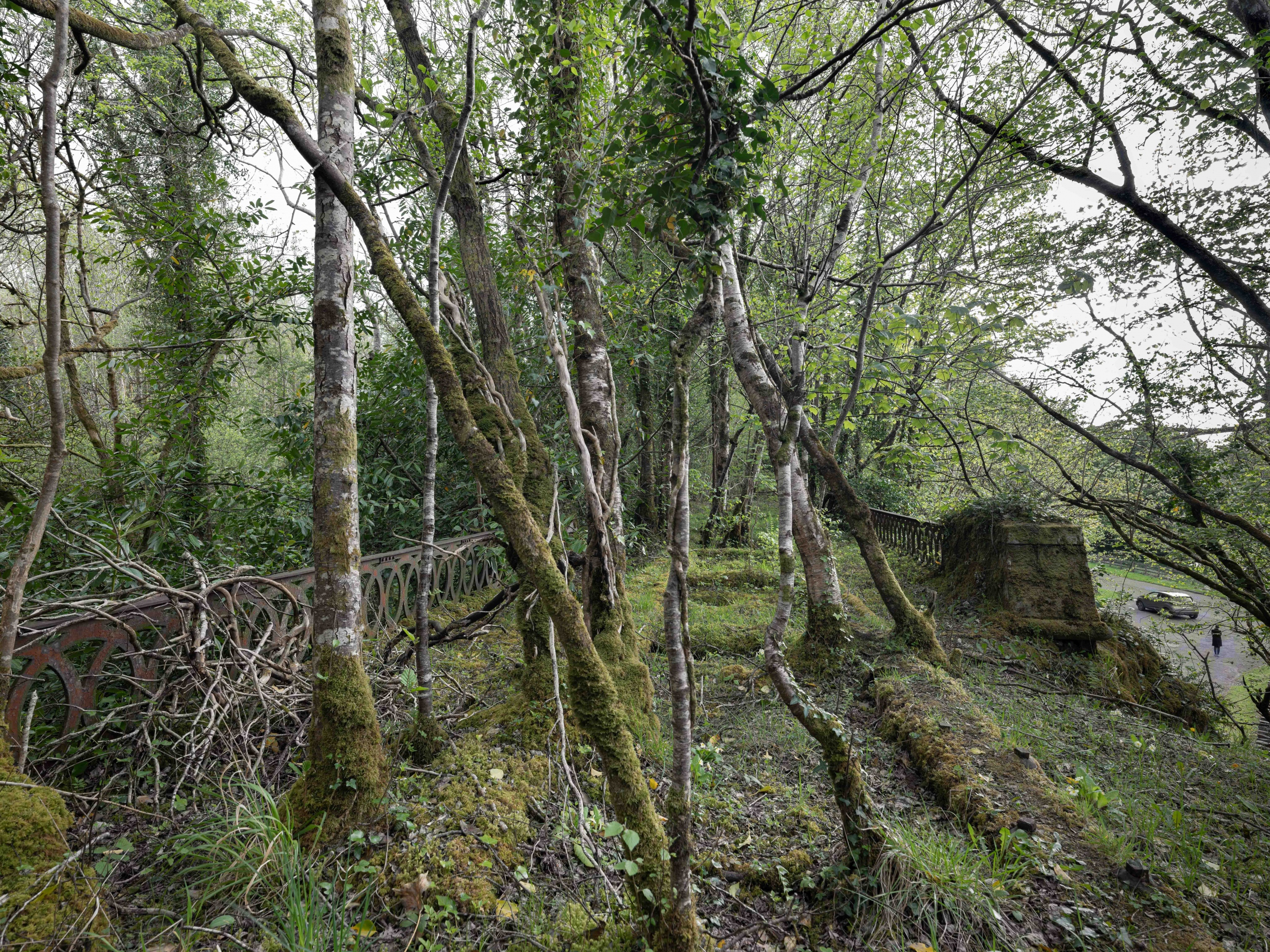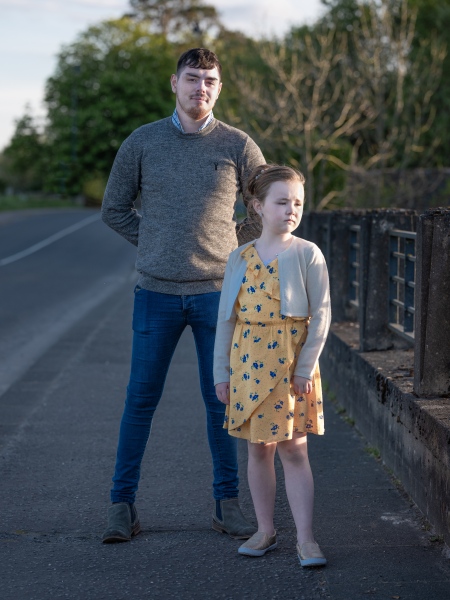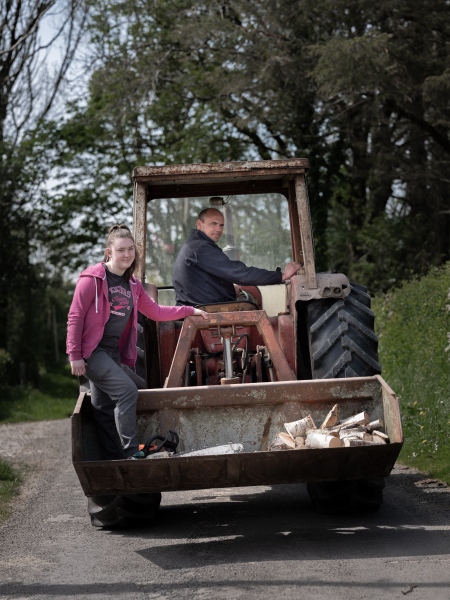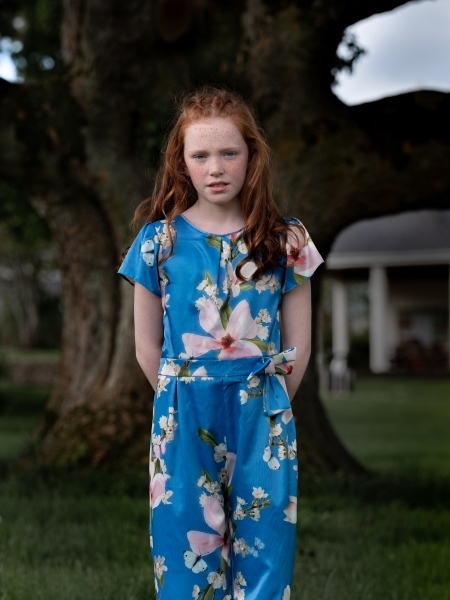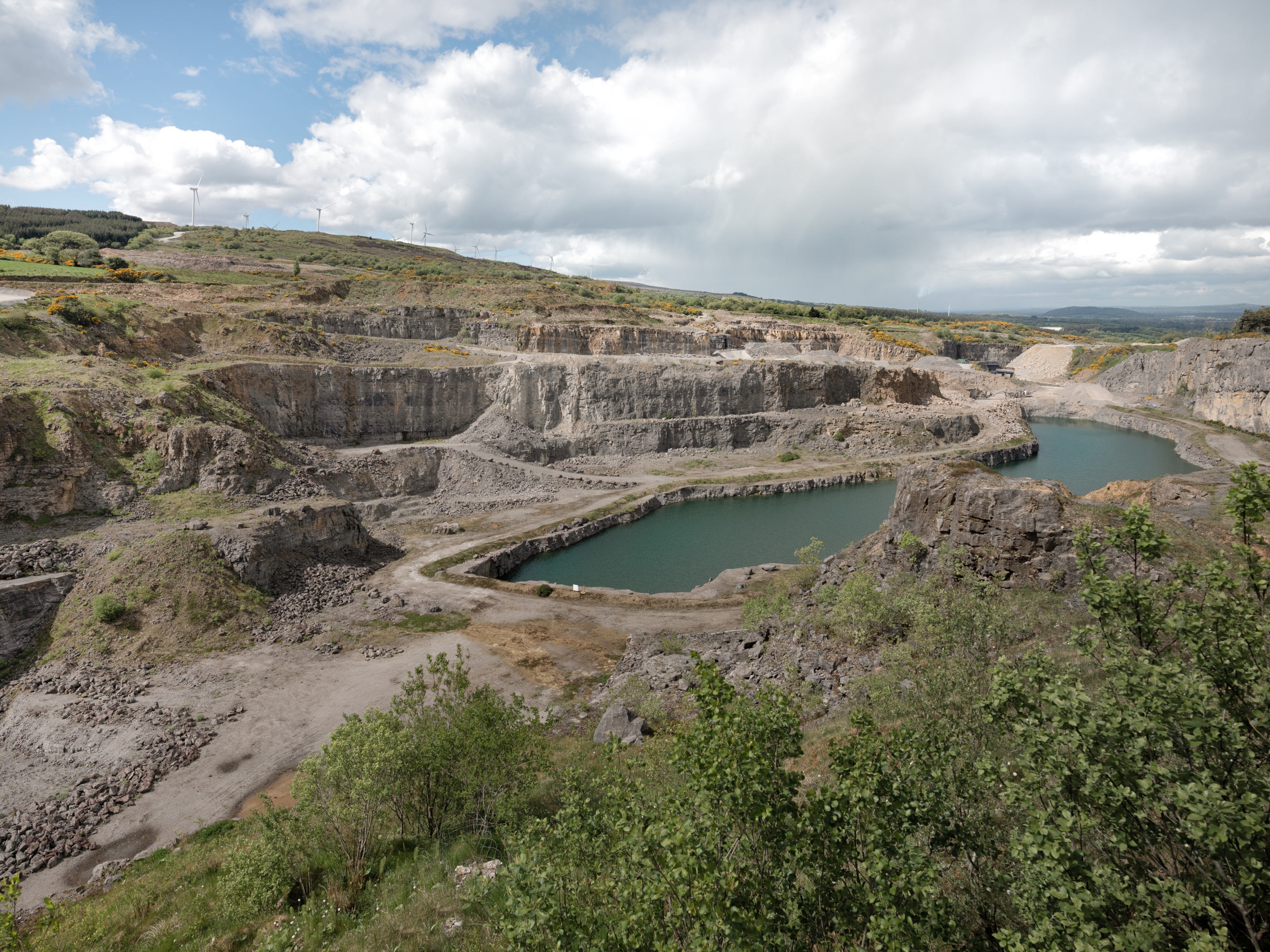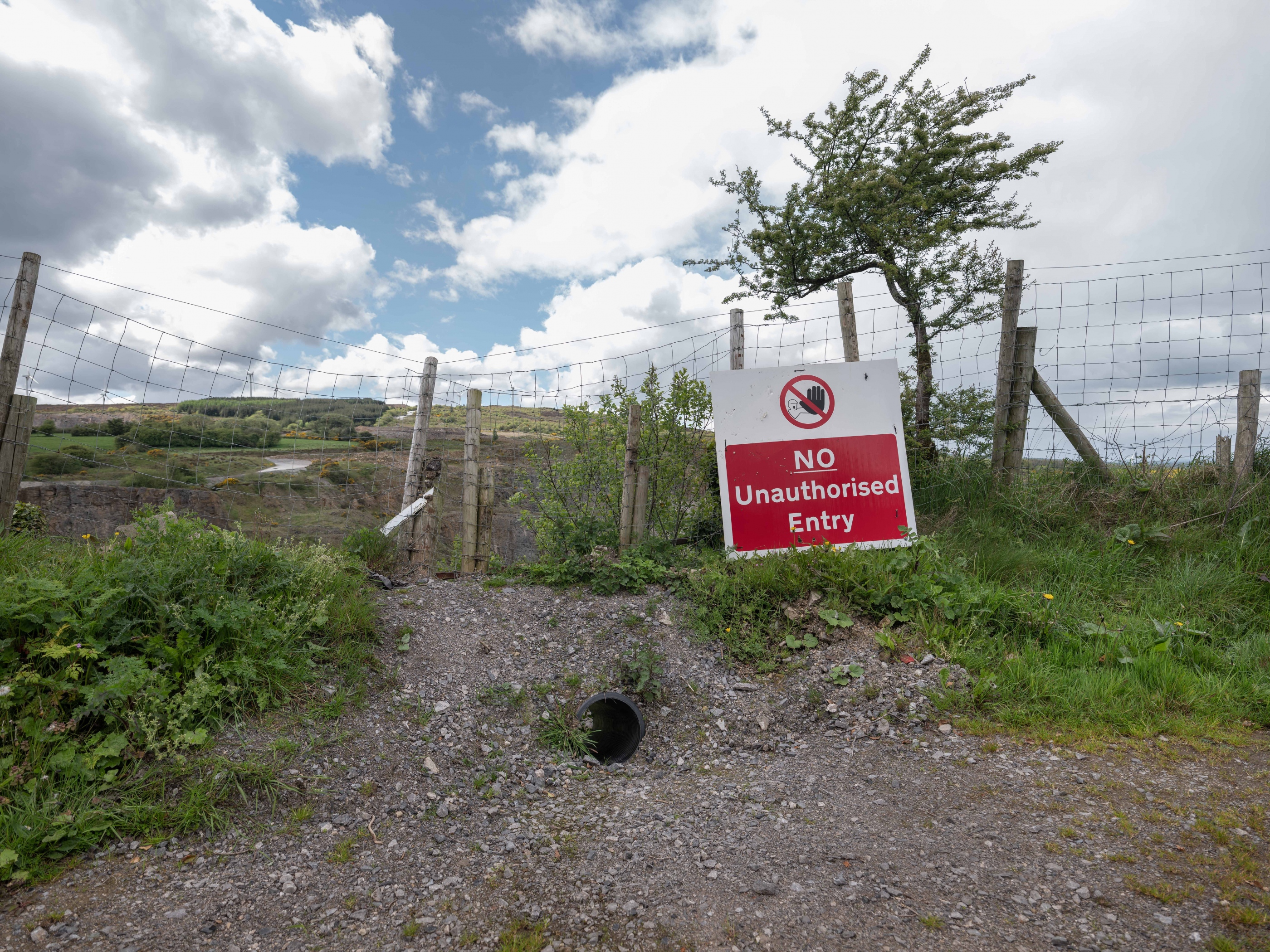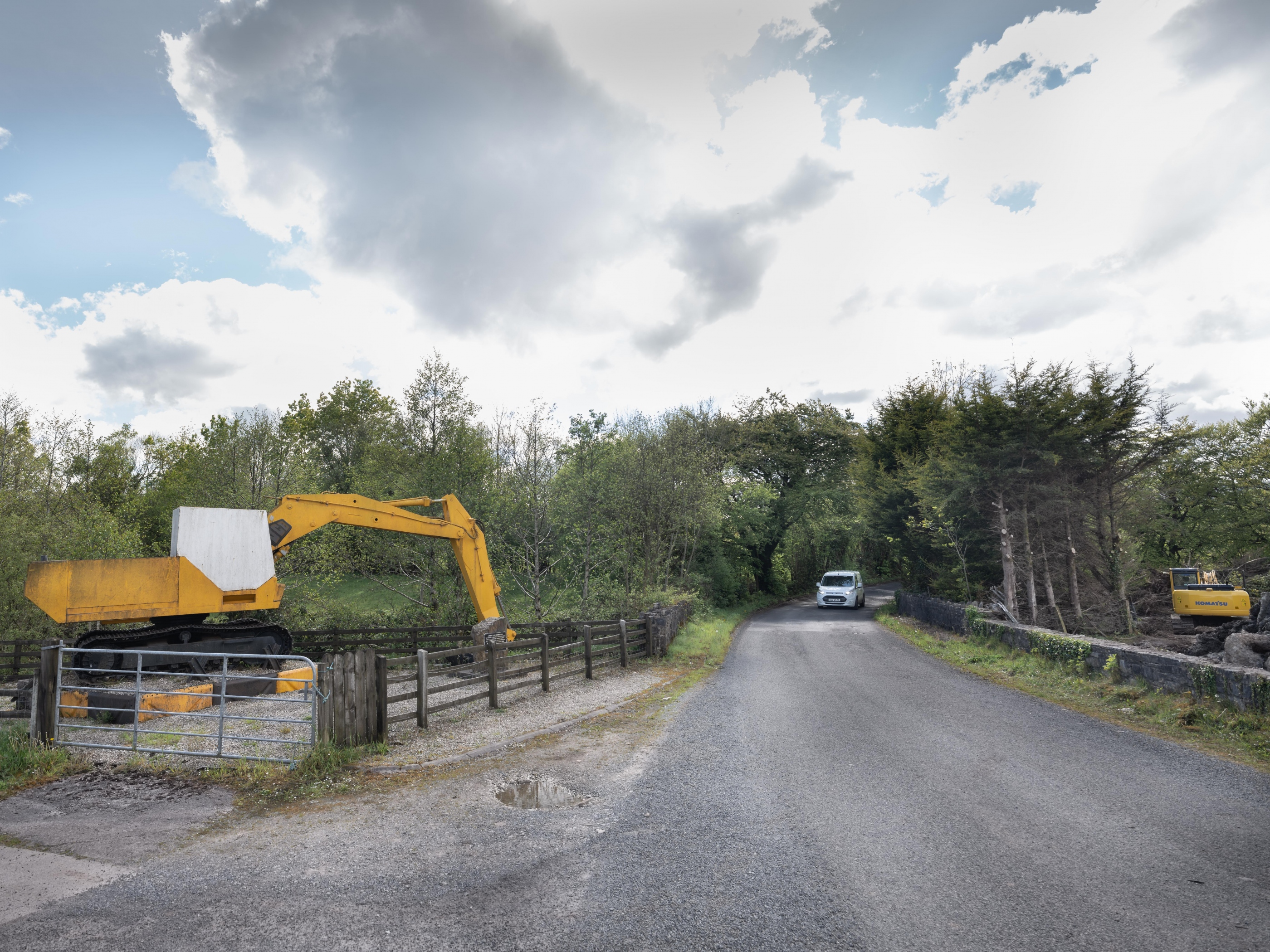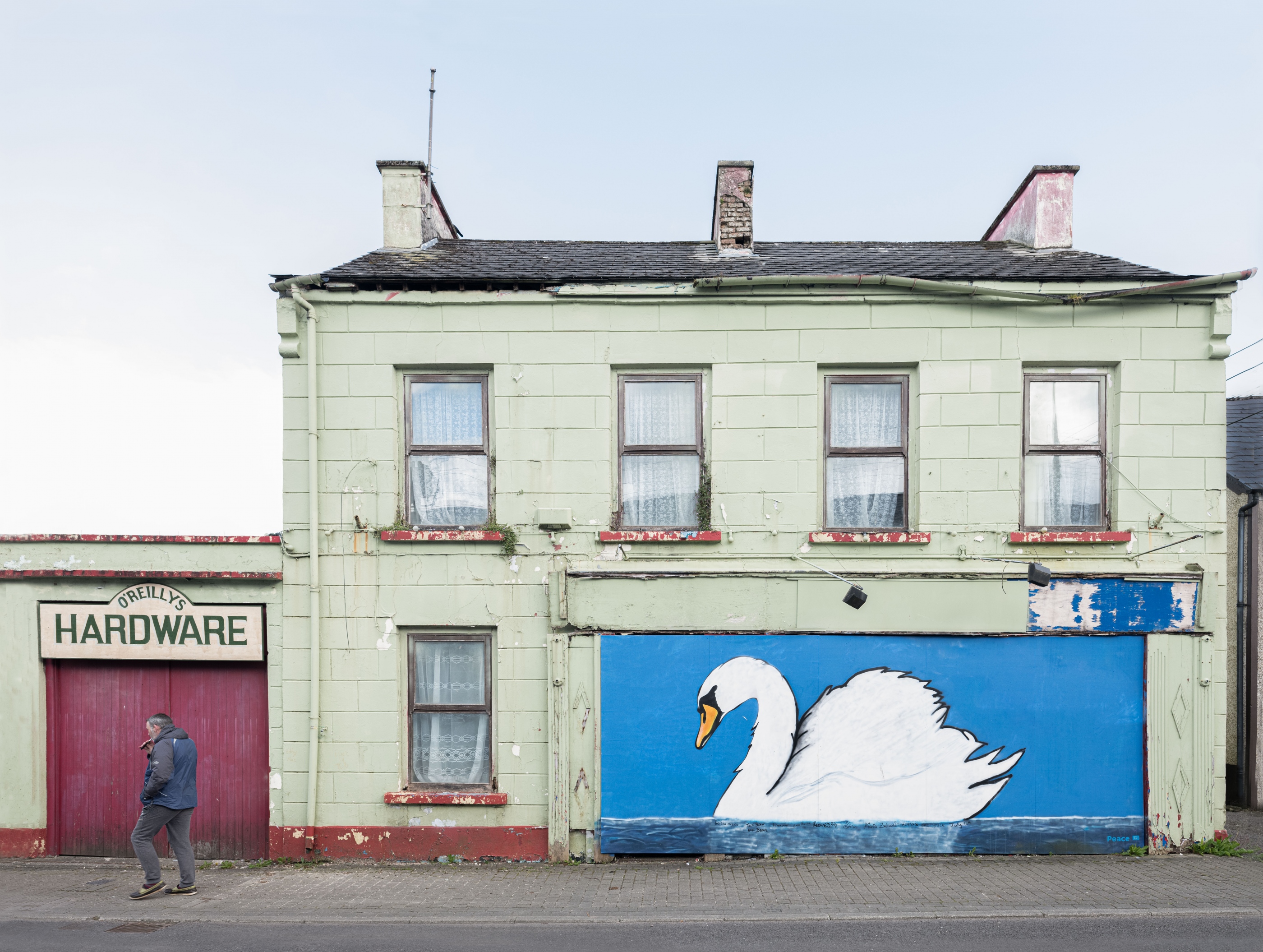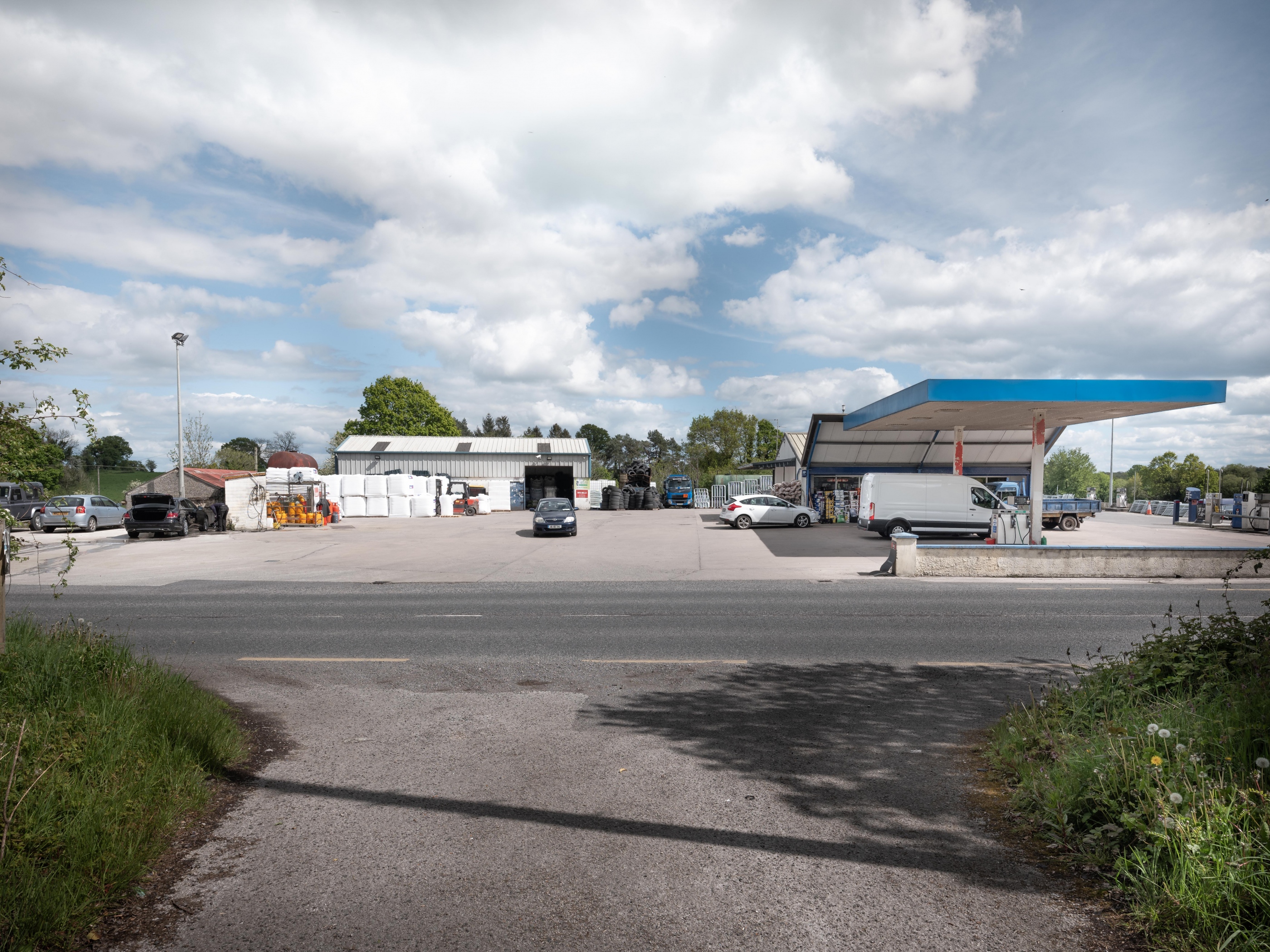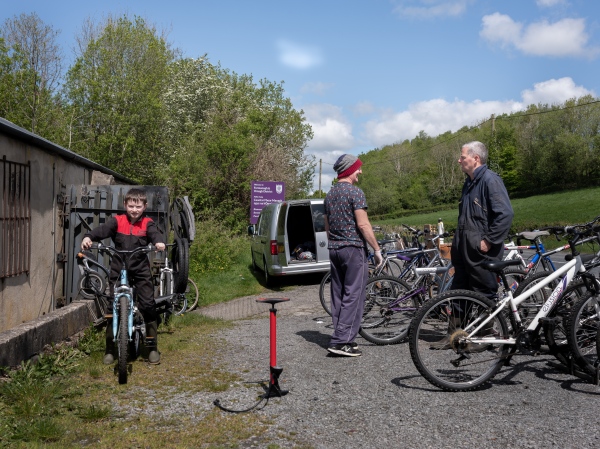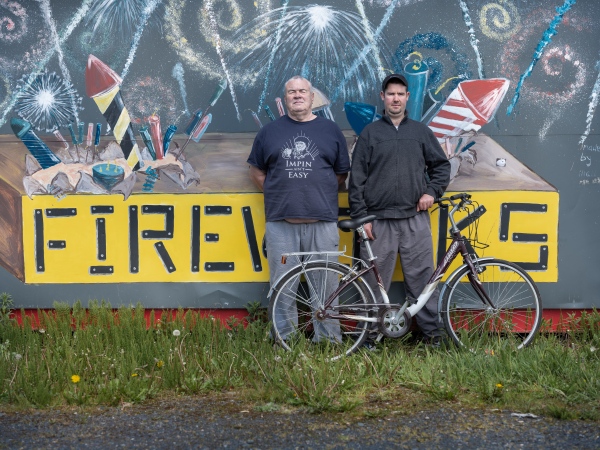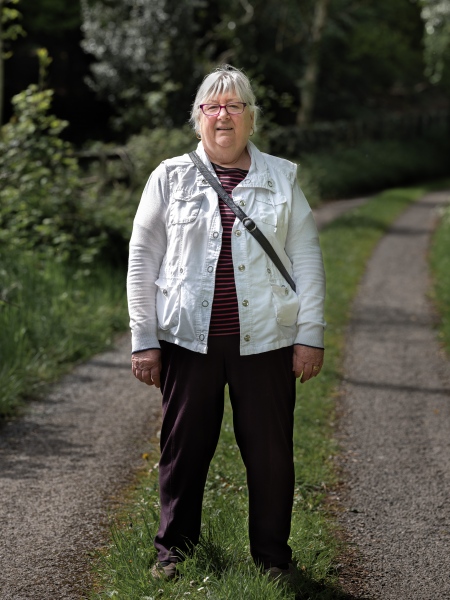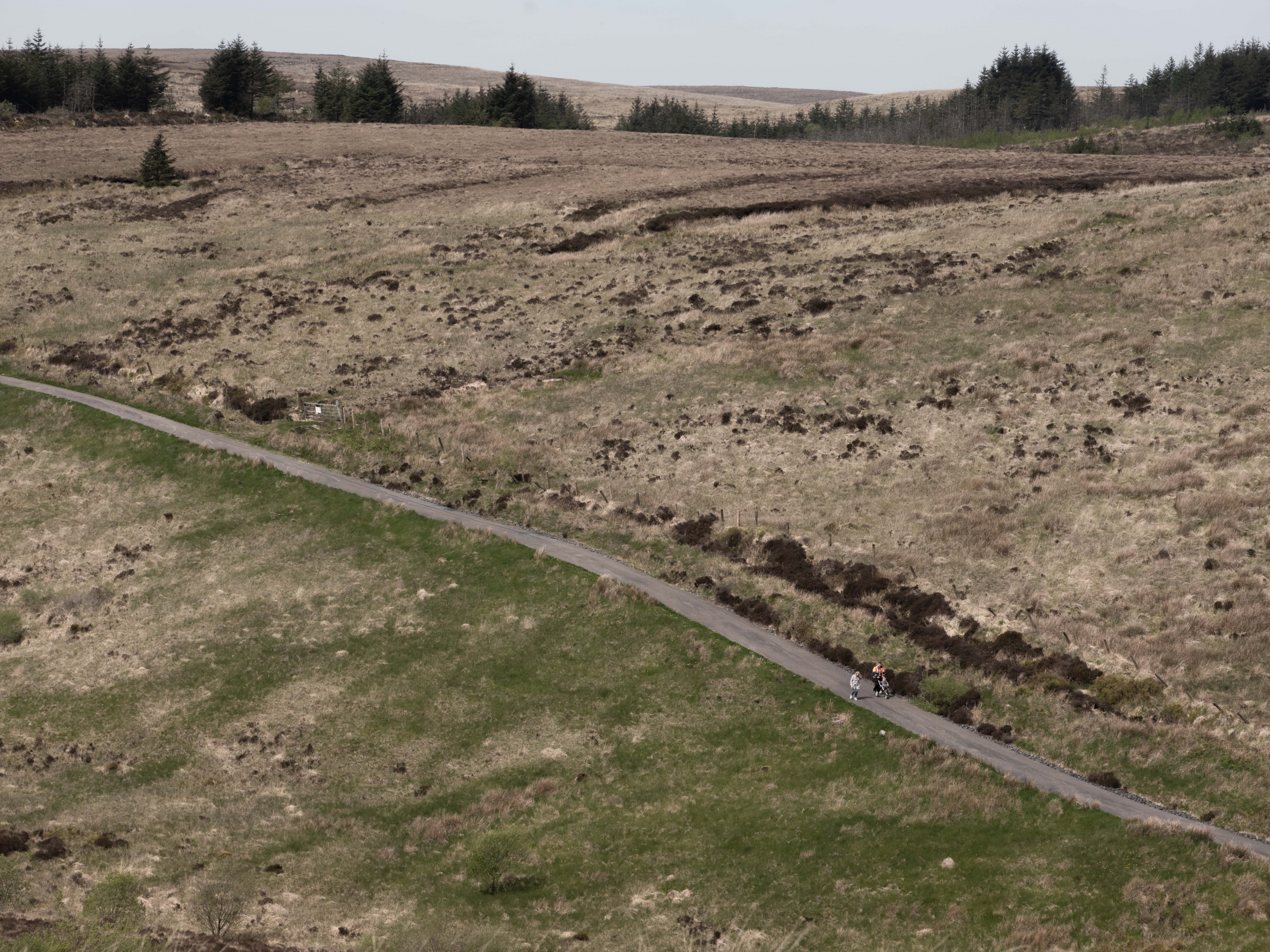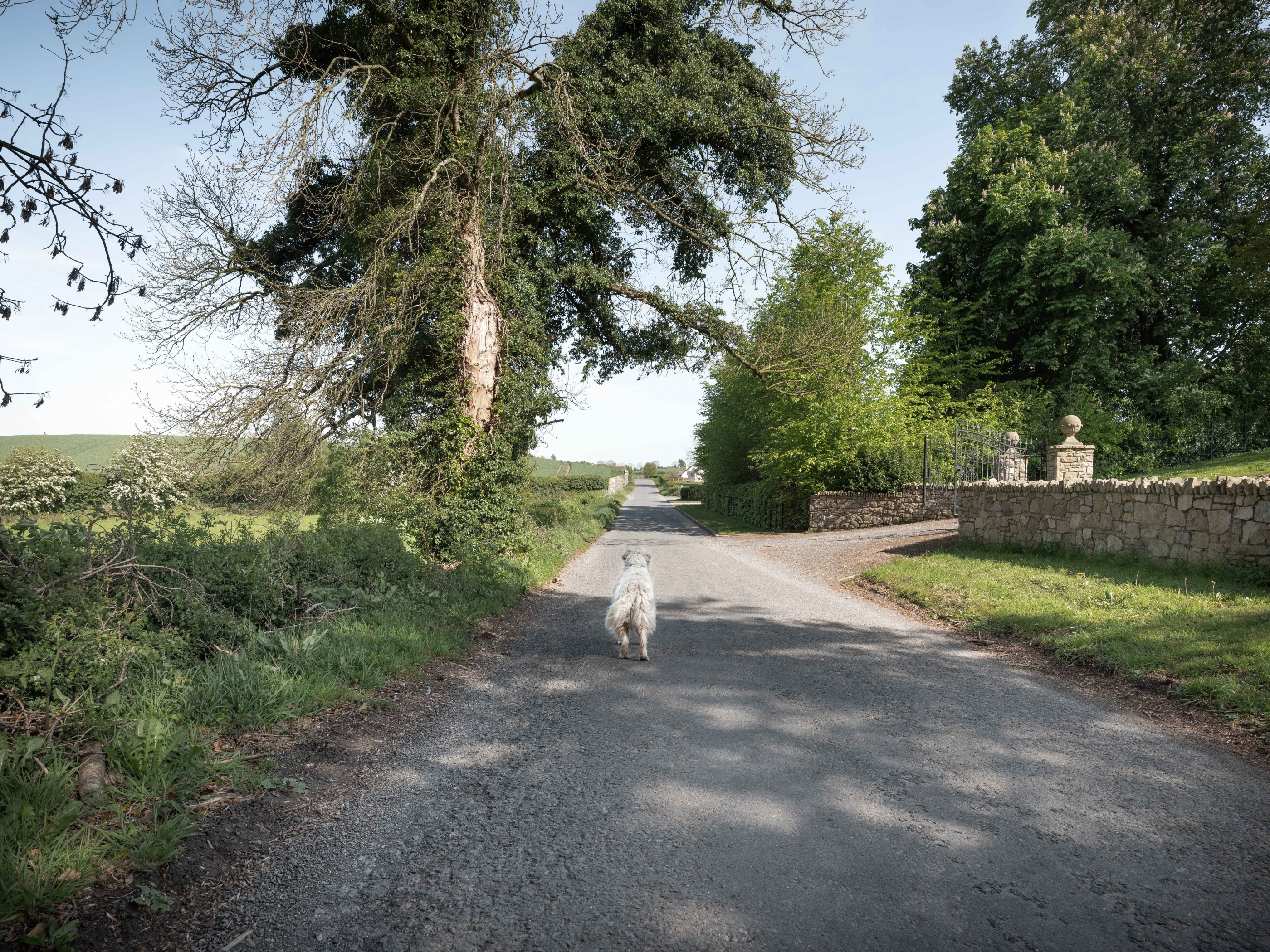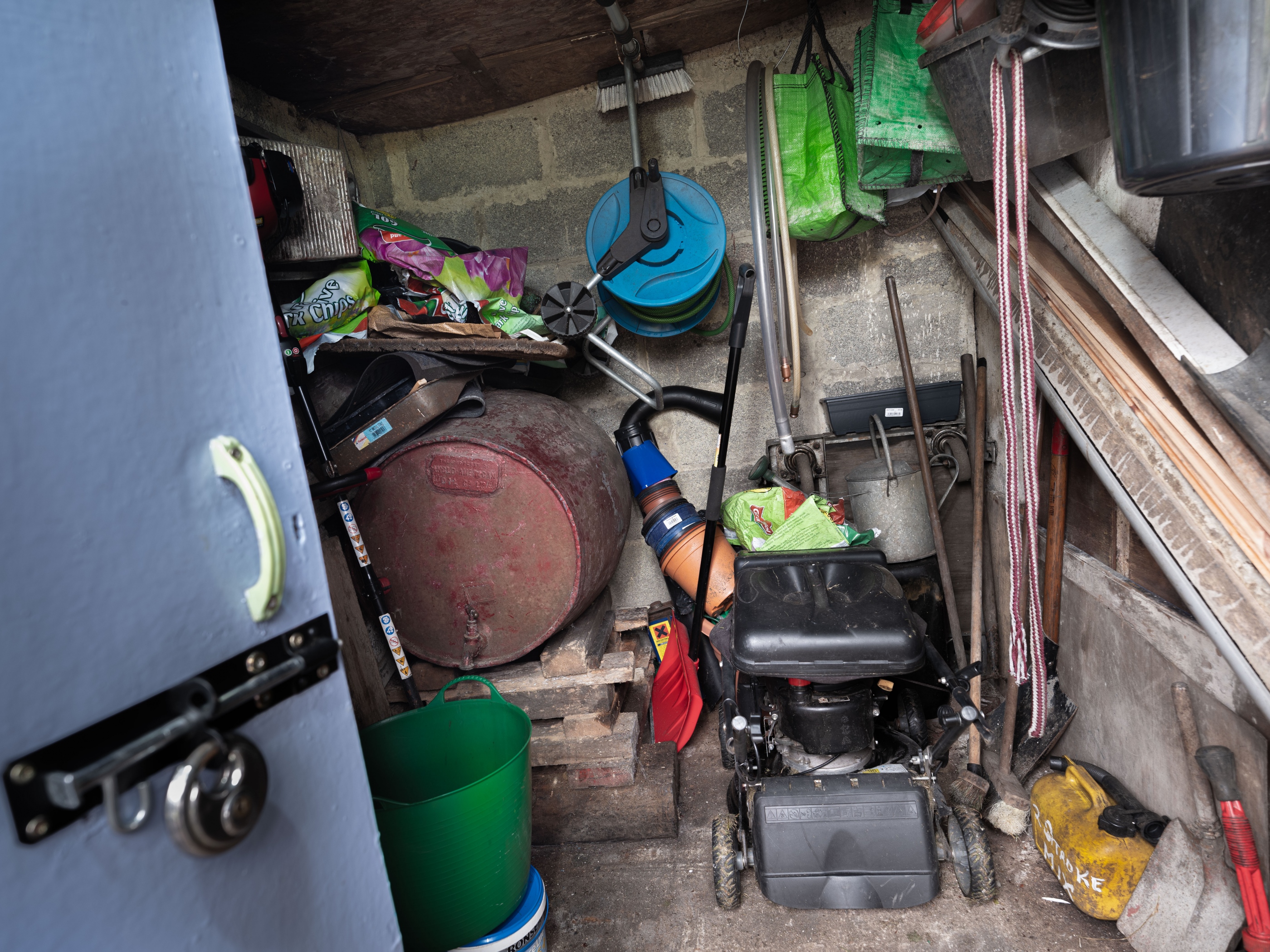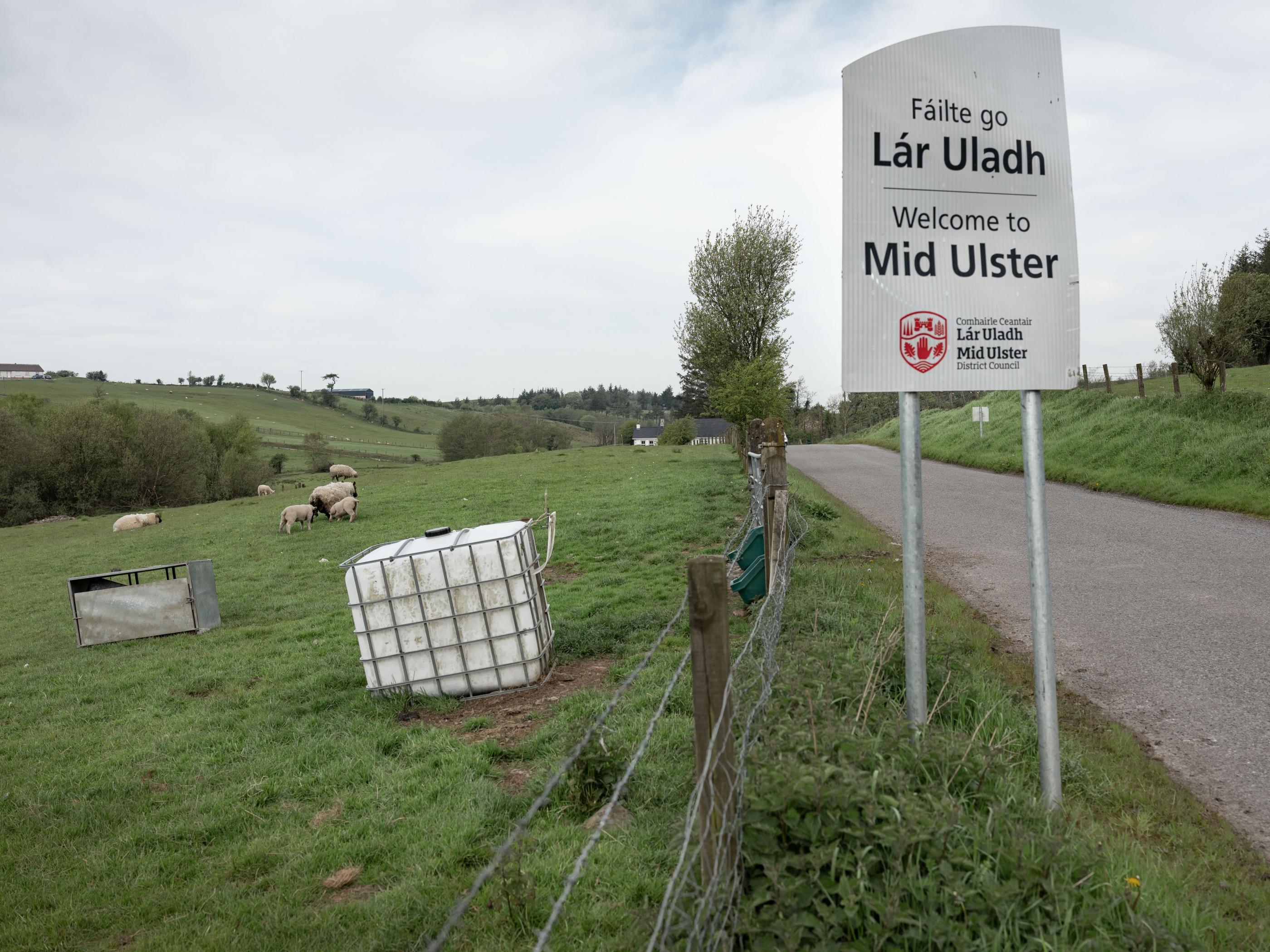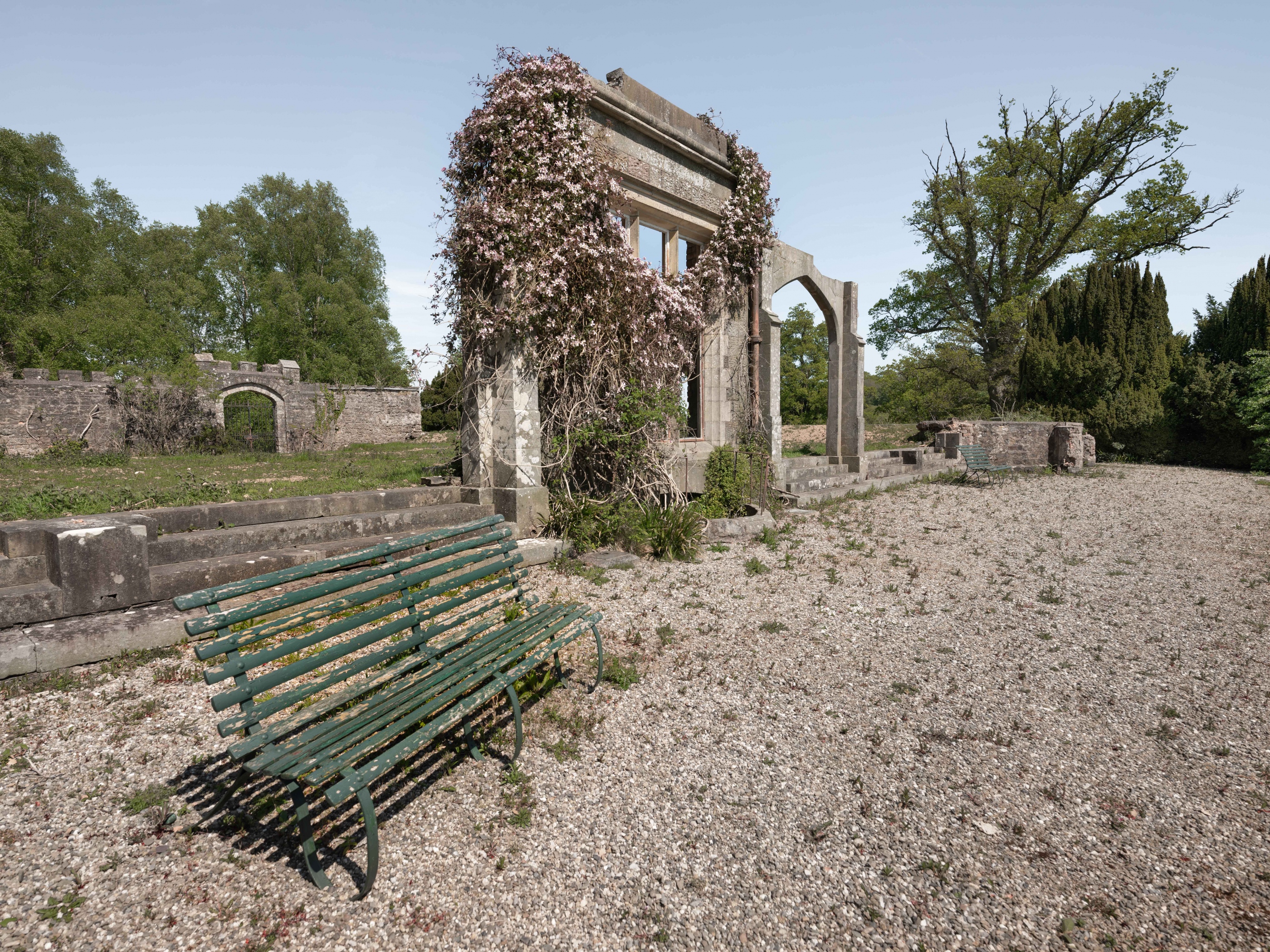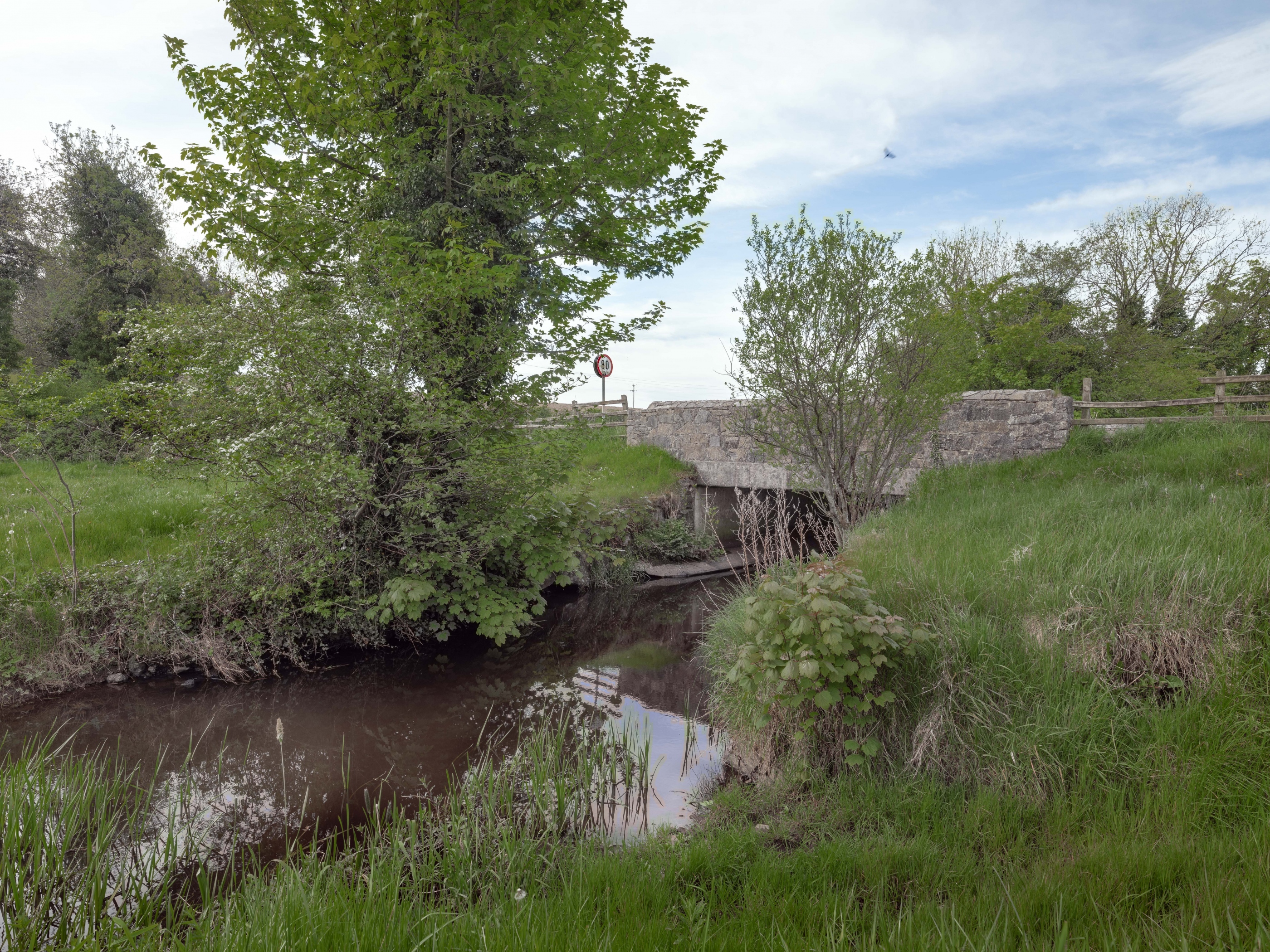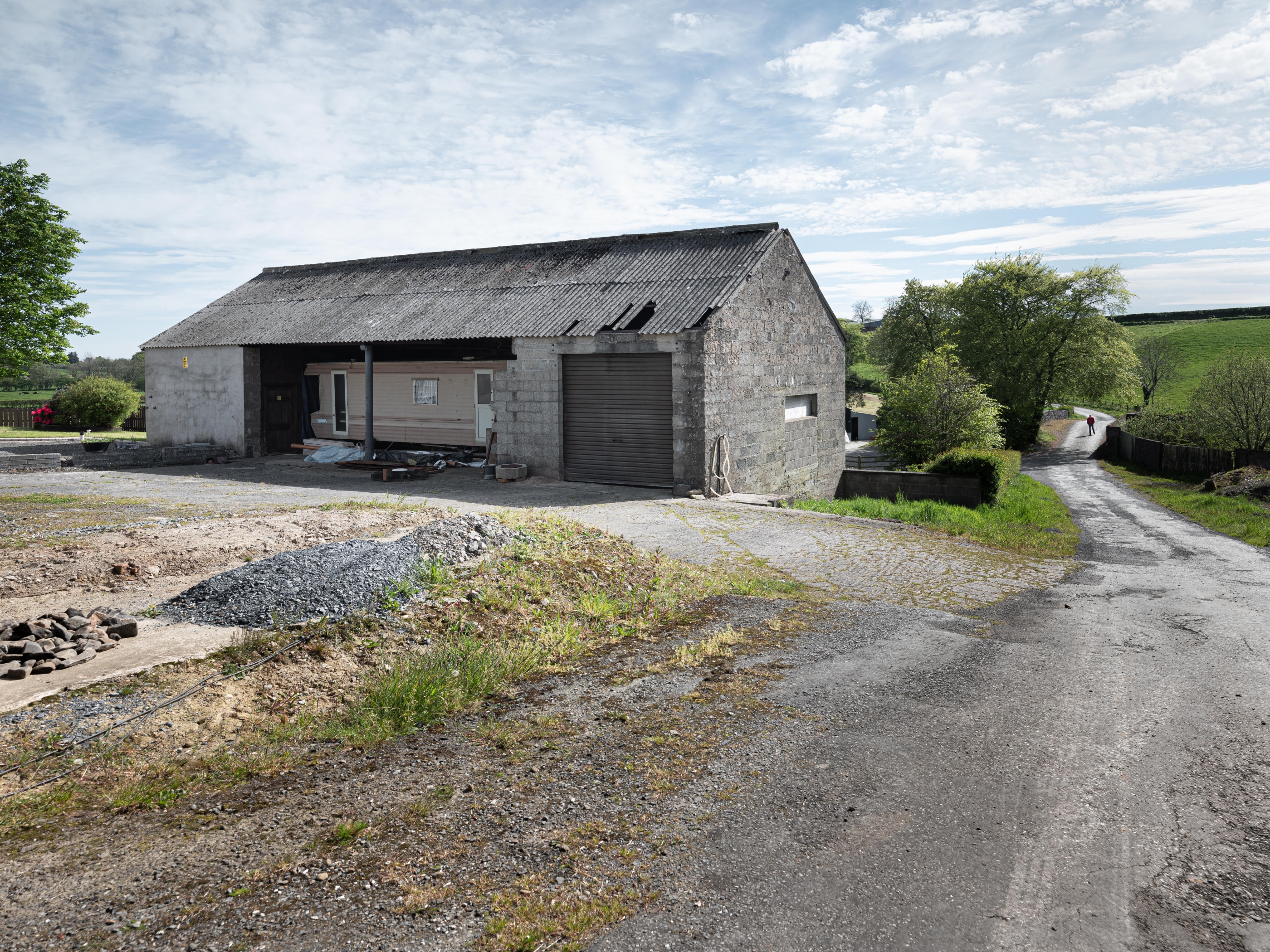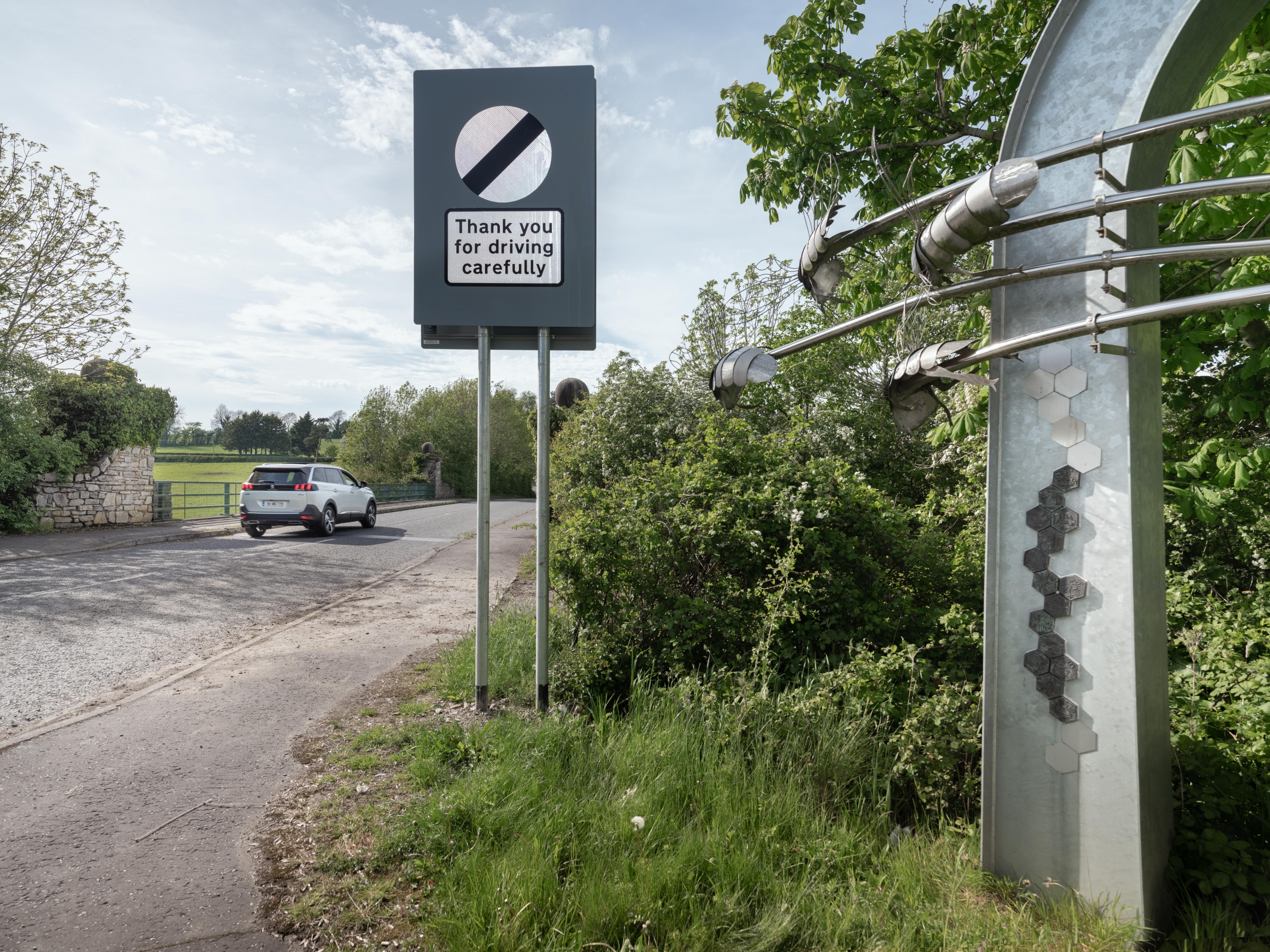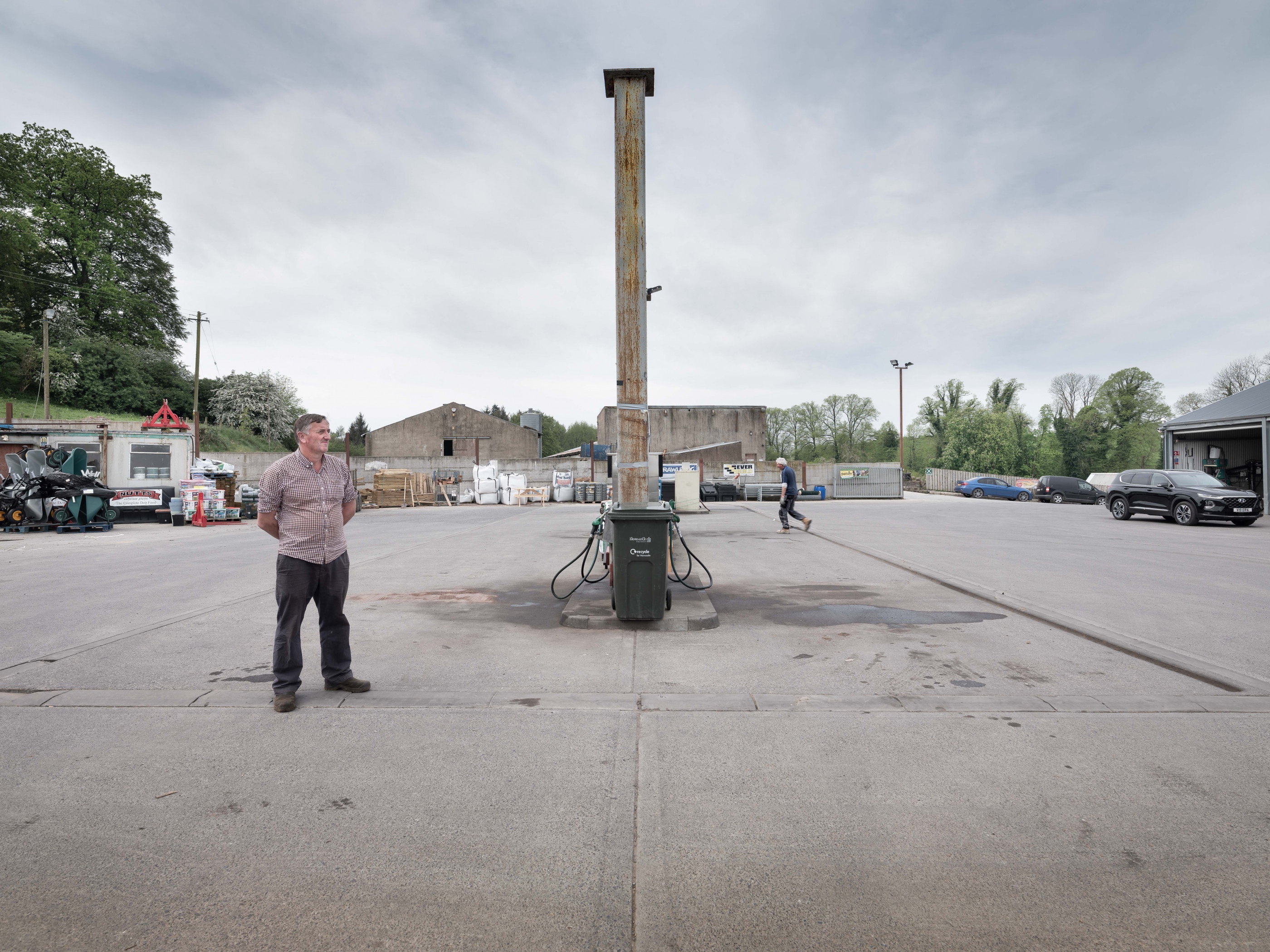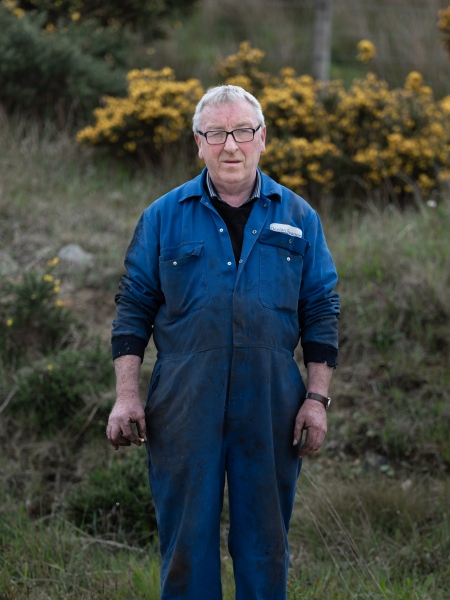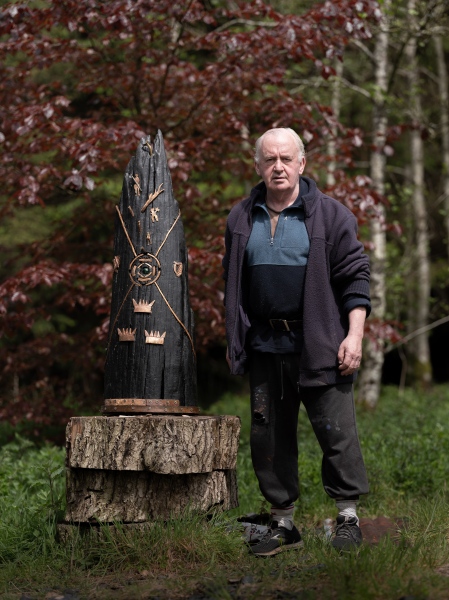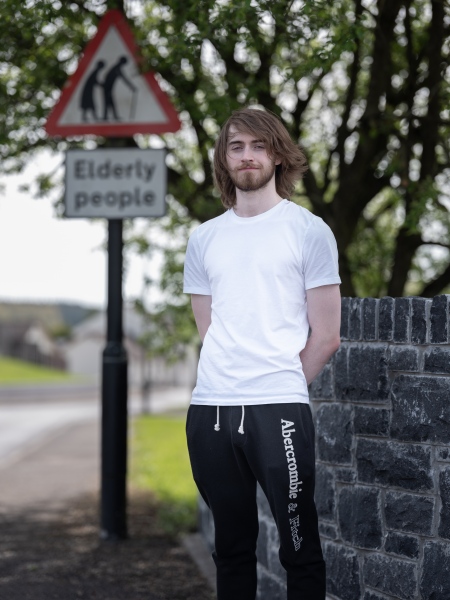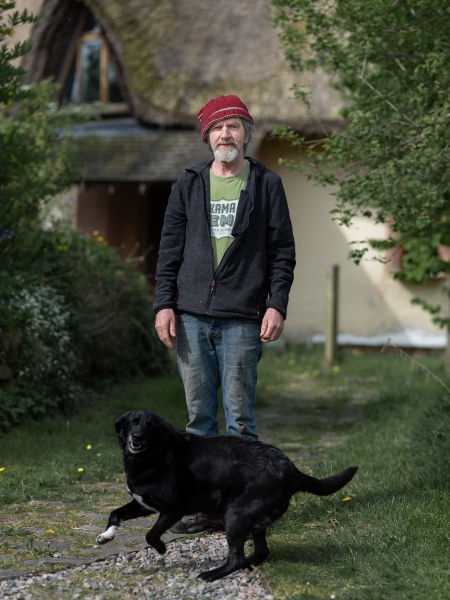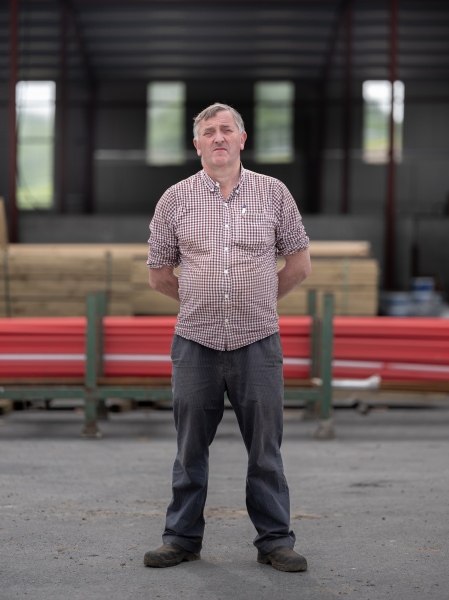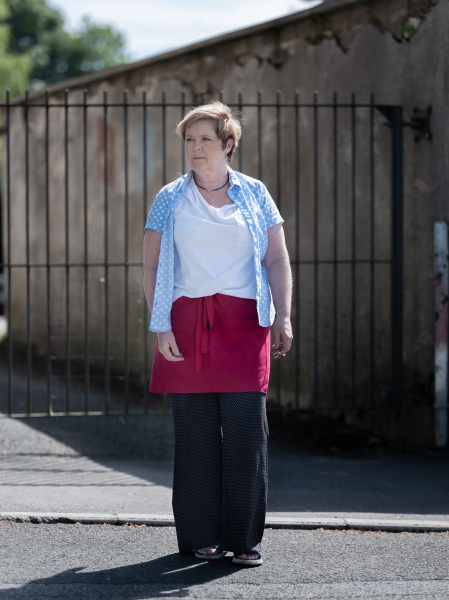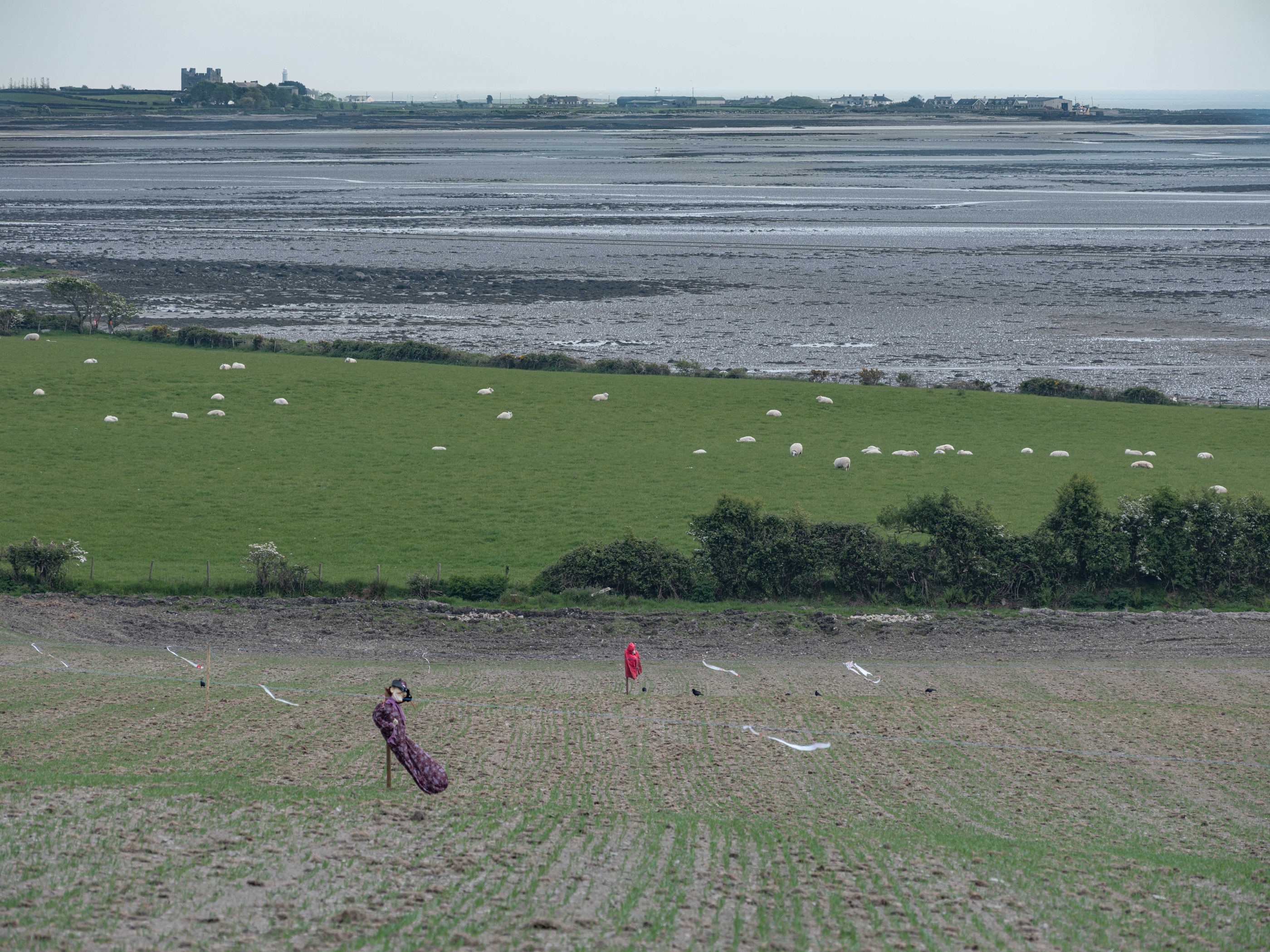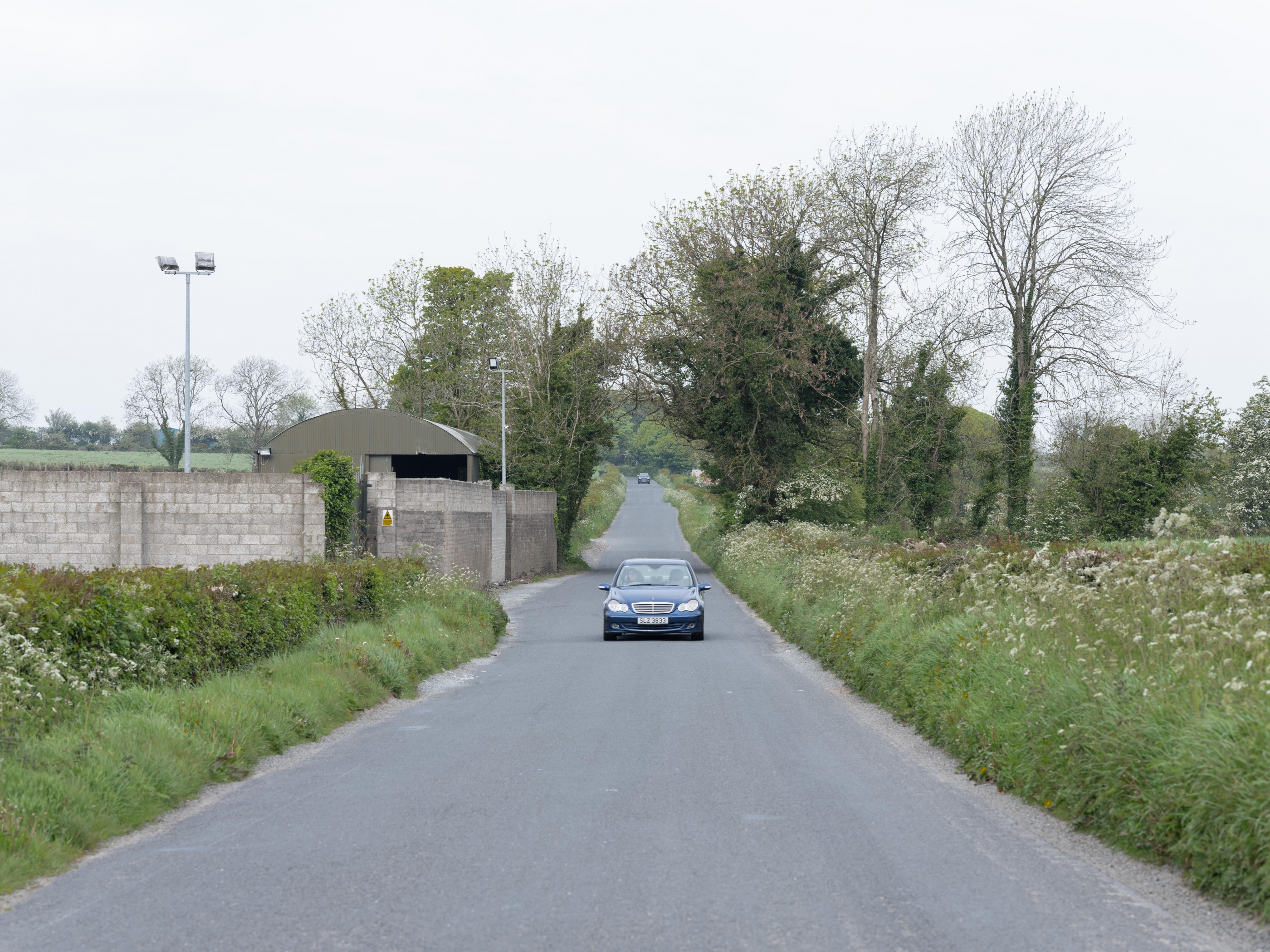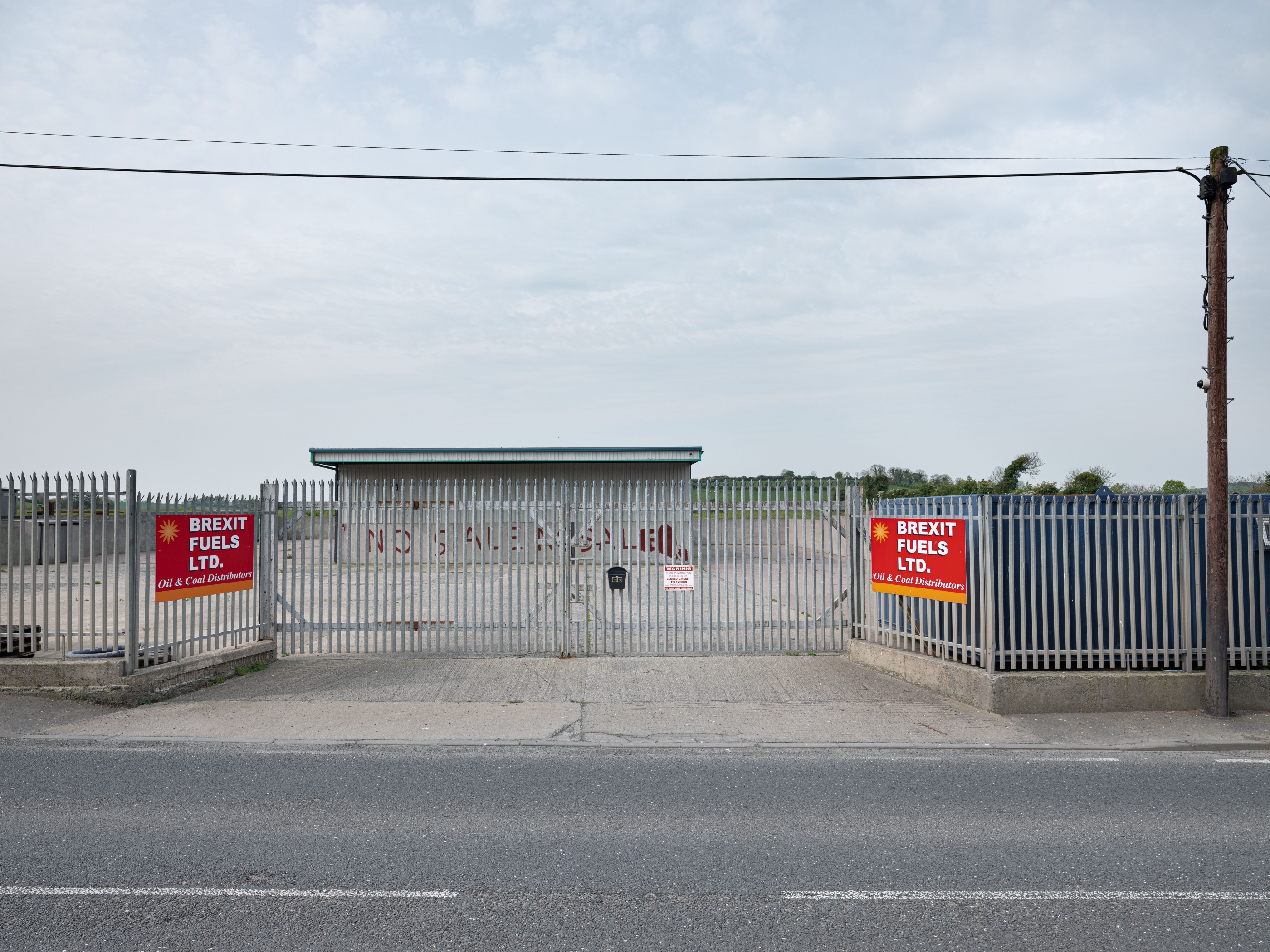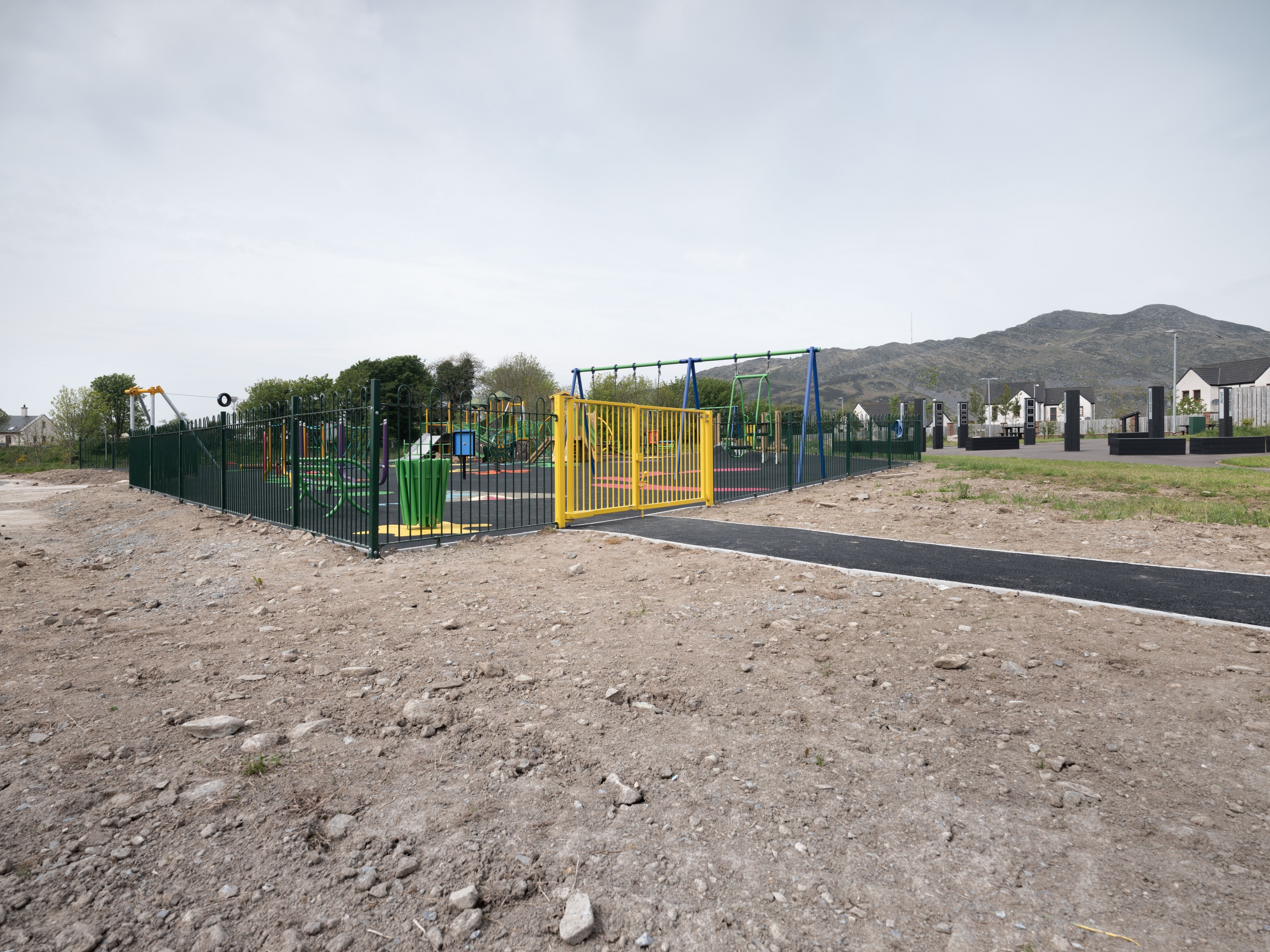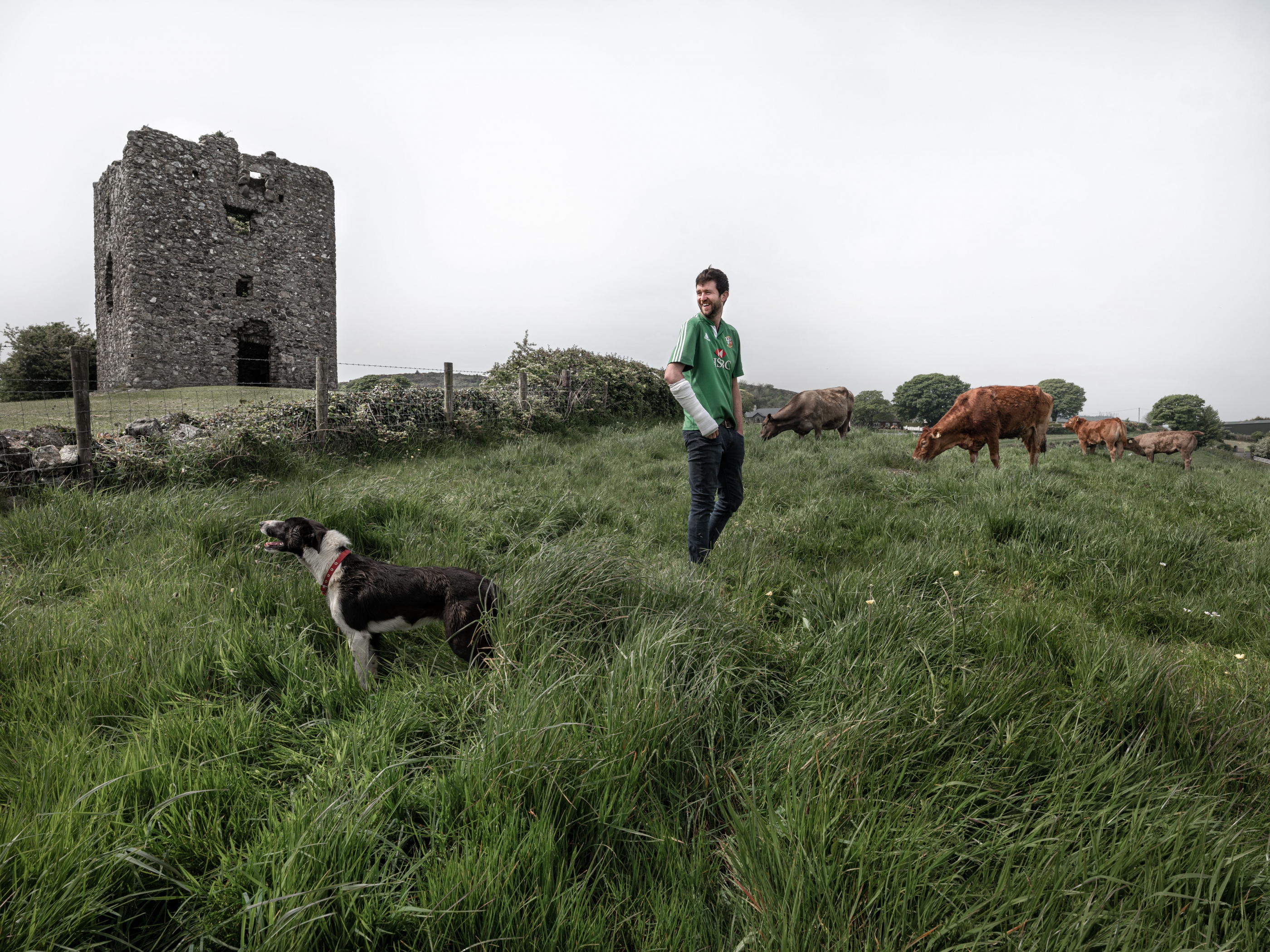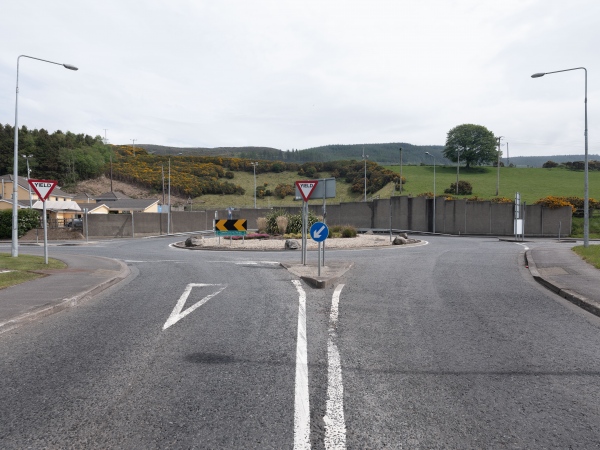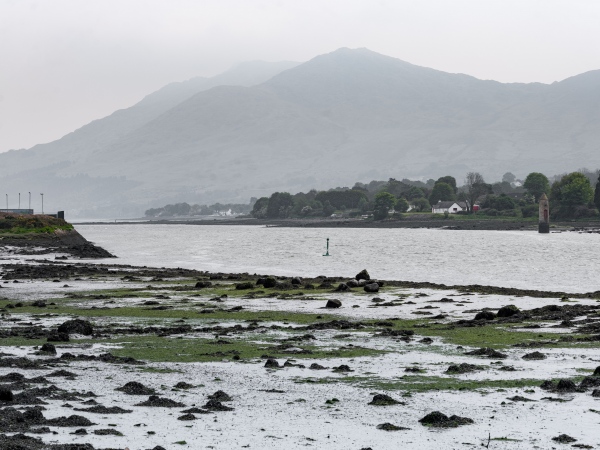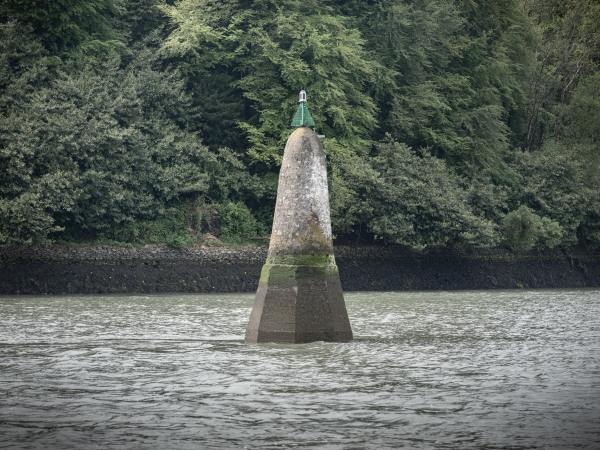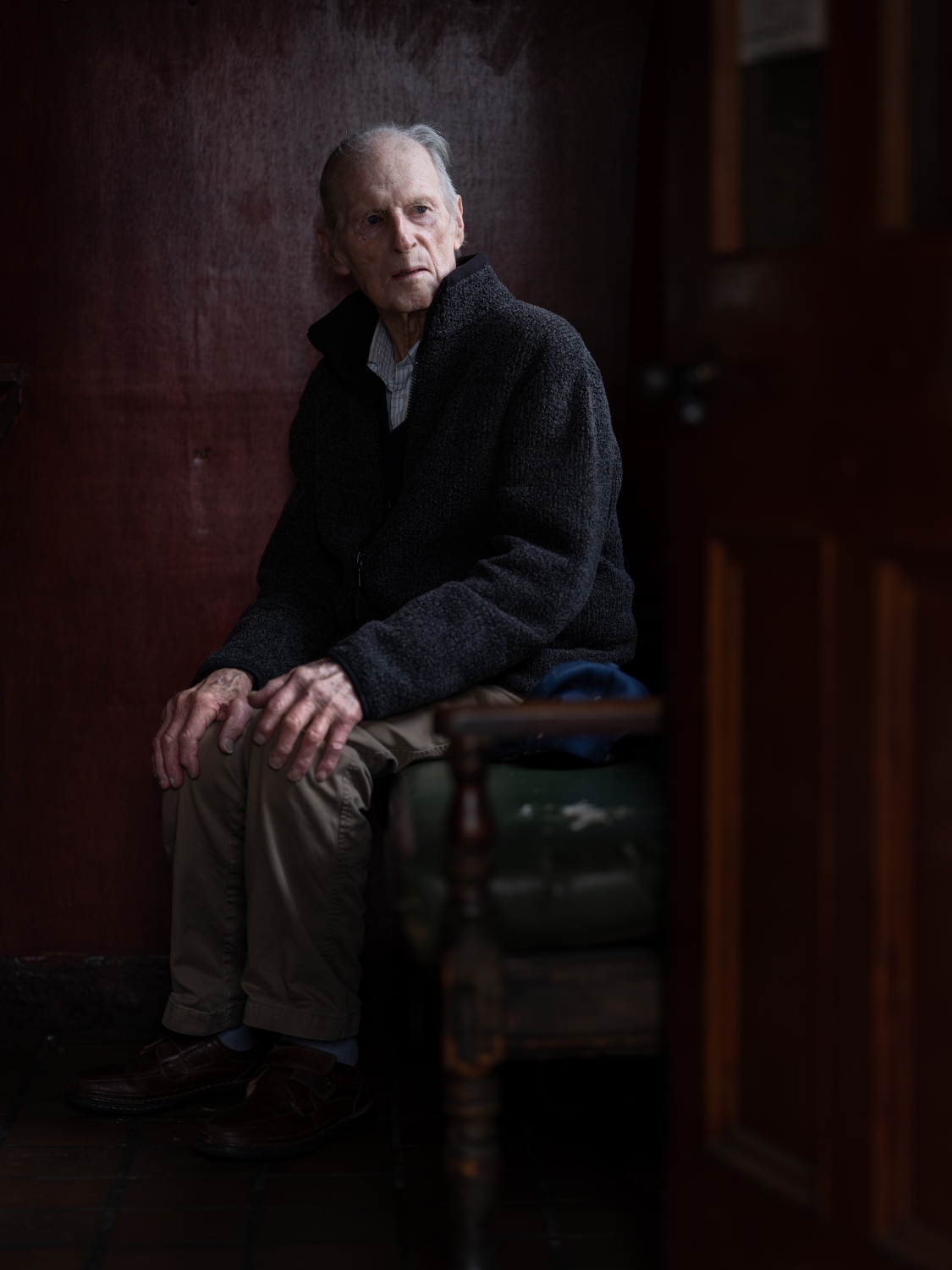208 ways to leave the EU
Ireland and the centre of the Brexit debate - Short stories of border land people
The sun always sets in the South
The Brexit project, fuelled essentially by UK right-wing party politics using migration as a divide and conquer strategy, has finally been “delivered”, or not really. This historical political U-turn has shaken the very core of British democracy and its institutions and it will take a decade if not more to become actually decoupled from the EU. It has left businesses, UK and other EU citizens living abroad with an uncertain vision of the future.Nurtured on half truths or, as some consider, flat out lies about the EU’s mandate and mission, 51.89% of the UK population - minus the 1.3 million British citizens residing in the 27 other EU member countries, who were excluded from vote - opted to leave the European project. A project that created a lasting stability for over 60 years and economic prosperity since the Second World War. One cannot but wonder why David Cameron initiated this referendum. A referendum is generally considered a very unreliable democratic instrument, especially when it is virtually impossible for the general population to oversee the complexities and fully assess the consequences of rewinding more than 40 years of integrated cooperation on almost every socio-economical aspect of their nation and that of its European neighbours. Brexit has become a promise of a golden age reminiscent of the former glory of the British Empire, without, it appears, a real concrete plan and risk assessment. In an increasingly interdependent world, will the much hoped for benefits offset the separation costs?Lough Foyle
In May 2019, I travelled the full length of the 500 KM long Irish border. Over a period of 2 weeks I covered close to1800 km criss-crossing the border, starting in the north-west at Lough Foyle and heading to the south-east of the Island, eventually reaching the shores of the Irish Sea. I visited most of the 208 official border crossings between the Republic of Ireland (EU) and UK's Northern Ireland (soon not longer to be a part of the EU).I met with the locals, listened to their stories on the Troubles and their views on Brexit, while taking in the reality of the terrain. I learned that people identifying themselves as being Irish on both sides of the virtual Irish border, consider NI and the Republic as two hands of the same body.
They believe that they have more in common than would separate them.
Foylemore Oysters
Foylemore Oysters was founded by William Lynch over 30 years ago. It faces severe economic consequences over a hard border. William travels the border several times a day to run his business. With his oysters in high demand all over the world, Brexit will do him no favours in securing his legacy - a business that he wishes to see continued by his sons. Although the UK claimes lough Foyle to be 100% british, this matter has hardly been settled with the Republic, contesting it since 1922. Is this another Brexit saga in the making?
Foylemore Oysters was founded by William Lynch over 30 years ago. It faces severe economic consequences over a hard border. William travels the border several times a day to run his business. With his oysters in high demand all over the world, Brexit will do him no favours in securing his legacy - a business that he wishes to see continued by his sons. Although the UK claimes lough Foyle to be 100% british, this matter has hardly been settled with the Republic, contesting it since 1922. Is this another Brexit saga in the making?
The border crossings around Derry
Fifteen or so of the 208 official border crossing as determined by the Department of Transport, Tourism and Sport are to be found around Derry.
Thomas who owns a B&B in Derry took me around in his car and taught me how to spot border crossings. Not an easy feat, as border crossings could be as little as a couple of metres apart and sometimes found in a cascaded south-north-south-north arrangement. He mentioned, that besides the speed signs in KM, the quality of tarmac - inferior in the North - a small bridge, creek or river could indicate one's passage from the South (Republic of Ireland) into Northern Ireland (UK).
Killae Water Reservoir
Killae Water Reservoir in Altaghaderry Carrigans, Co. Donegal is one of those real-life-border-issues. Here, the border actually gets wet feet. Half of this drinking water reservoir lies in the Republic, the other half in Northern Ireland/UK. Shaun Doherty on the left is the voluntary unofficial caretaker. The little metal square plate at his feet in the image marks the border.Brexit and border controls give him a good laugh.
The run on Irish passports
Robin is a retired construction engineer. He lives in Northern Ireland. When I met him, he was walking on Dundrean back road. He explains that Ireland, traditionally, was very bad at naming roads. A house would pop up and a road would be named after the person living there.
His family has been in Ireland since the 1800s and he totally identifies as British. Although he speaks with a distinct Irish accent, he admits that nobody in his family has Gaelic blood running through their vains. He is one of the few not going for an Irish passport as foreseen under the Good Friday Agreements. Brexit, however and putting up a hard border - for him - remains a decision on the wrong side of history, though he can understands the sentiment of some disappointed with EU politics.
Following the Brexit movement applications for Irish passports have skyrocketed. I wonder, if in case of a critical number of passports issued - under the assumption that a passport holder automatically is considered a national - unification might already be a done case.
Robin is a retired construction engineer. He lives in Northern Ireland. When I met him, he was walking on Dundrean back road. He explains that Ireland, traditionally, was very bad at naming roads. A house would pop up and a road would be named after the person living there.
His family has been in Ireland since the 1800s and he totally identifies as British. Although he speaks with a distinct Irish accent, he admits that nobody in his family has Gaelic blood running through their vains. He is one of the few not going for an Irish passport as foreseen under the Good Friday Agreements. Brexit, however and putting up a hard border - for him - remains a decision on the wrong side of history, though he can understands the sentiment of some disappointed with EU politics.
Following the Brexit movement applications for Irish passports have skyrocketed. I wonder, if in case of a critical number of passports issued - under the assumption that a passport holder automatically is considered a national - unification might already be a done case.
The border between County Donegal (South) and County Tyrone (NI)
Visiting the border, starting in Clady and heading west into Co. Donegal, is not a straightforward undertaking since there are multiple border crossing scattered throughout the desolate but beautiful landscape. The further you go out west, the more rugged and stunning it becomes. The furthest point west on the border is the entrance of Killeter forest near old Kelly's farm (not longer there). Killeter forest is predominantly a pine tree forest set in landscape scattered with wind turbines. Beyond that point, the border turns back east towards Co. Tyrone and then South towards Pettigo, straddling Lough Derg's old pilgrim's road.County Tyrone's red and white colours (Gaelic Football) are set in a desolate countryside north of Killeter. I just saw one car in the space of two hours and an abandoned house at the border crossing. Going further east towards Co. Donegal, the countryside slowly becomes more rugged. I cross a small stone bride and another one, forlorn in the bogland, marking the border. Time for a warming seafood chowder at the Smugglers Inn in Rossnowlagh in the Republic. It is another 25 min. drive or so, but oh so worth it.
Kelly's Farm
At the entrance of Killeter Forest I met Seamus Mc Grory, 56 years of age. He is from the South (Republic). The border crossing, a little unassuming stone bridge over an even smaller stream (Lichenae) was nevertheless an important former smugglers' route. Whenever the British army would again and again blow up the road, the IRA would fill it up with stones from the Kelly's farm house. Kelly's farm was infamous for being in the old days a smugglers’ hub (The Kellys left in the mid 60s).
However, the army blew up another bridge in order to stop the IRA from transporting the stones. Seamus believes that unification would be a good thing but he is not sure it will happen in his lifetime.
At the entrance of Killeter Forest I met Seamus Mc Grory, 56 years of age. He is from the South (Republic). The border crossing, a little unassuming stone bridge over an even smaller stream (Lichenae) was nevertheless an important former smugglers' route. Whenever the British army would again and again blow up the road, the IRA would fill it up with stones from the Kelly's farm house. Kelly's farm was infamous for being in the old days a smugglers’ hub (The Kellys left in the mid 60s).
However, the army blew up another bridge in order to stop the IRA from transporting the stones. Seamus believes that unification would be a good thing but he is not sure it will happen in his lifetime.
What's bad for the sheep is bad for us
Nigel Hemphill - 20 years old. Works on Howard Pollock's farm. I met him on Grahamstown Road in the North around the Castlederg region. On the question of a hard border he immediately replies: "that would be bad for the sheep". Getting them to the South where they graze and back would become a problem. Farming is done in the North but the grass is literally greener in the South where the farmer also has land.
This is a typical situation for most farms situated on and around the border.
Nigel Hemphill - 20 years old. Works on Howard Pollock's farm. I met him on Grahamstown Road in the North around the Castlederg region. On the question of a hard border he immediately replies: "that would be bad for the sheep". Getting them to the South where they graze and back would become a problem. Farming is done in the North but the grass is literally greener in the South where the farmer also has land.
This is a typical situation for most farms situated on and around the border.
The Point
Noel lives on Seegronan Road Co. Tyrone, and the border is located at the "Point" which is basically the end of that road, surrounded by trees, fields and wind turbines.
Noel is a retired trucker and he recalls that smuggling cattle and foodstuff was a big thing during the 1930's, but less so during the Troubles. Accessibility is difficult since the (N)/Irish country roads locally can be nothing but hardened paths full of ditches and tire exploding holes.
Noel lives on Seegronan Road Co. Tyrone, and the border is located at the "Point" which is basically the end of that road, surrounded by trees, fields and wind turbines.
Noel is a retired trucker and he recalls that smuggling cattle and foodstuff was a big thing during the 1930's, but less so during the Troubles. Accessibility is difficult since the (N)/Irish country roads locally can be nothing but hardened paths full of ditches and tire exploding holes.
From Belleek all the way down to Belcoo
“But in what country have we been?” - John Montague, Poet.
Belleek is one of those typical towns where there is more than one border and they can be found within 50 metres from each other. And then there is Pettigo, same thing and with the additional risk of literally ending up in Lower Lough Erne at the end of the road near Boa island / Lusty Beg. About 20 min out north east of Pettigo, I visited Lettercran where there are two border crossings literally next to each other.
It was a wet evening and Rosaleen, 94 years of age, recalls her smuggling years when she would buy tobacco at Tommy Haughey's Shop in the South. The ruins of the shop are still there. From there on, I took the second and parallel border-crossing, direction Pettigo. The border zigzags for several kilometres over the "main" road until it reaches Pettigo. On the road between Belleek and Pettigo near the the Cross, a border pub, there are the overgrown remains of a railway bridge straddling the border.
In Belleek, more or less perpendicular to the mainroad, Johnny Cunningham, an historical expert and author on the region, took time out to show me Doland's road where Brandon and a lady wearing a yellow sports-coat were walking their dogs. During the troubles this already narrow road was reduced even further with concrete blocks allowing only one car at a time to cross the border.
Taking the direction of Bundoran, I went south bound where the border cuts through Lough Melvin and continues over land, passing Rossinver, Kiltyclogher and finally meandering through Upper Lough Macnean into Blacklion and Belcoo. On the road to Kiltyclogher, the regular clues for identifying border crossings become more challenging and a lone farmer out for a walk was able to point me in the right direction - "somewhere around that second tree in the distance, there is a tiny stone bridge".
On a pier overlooking Lough Melvin, I met Susan Huggins from Cork. Her dad had passed away earlier in the year and she came to the pier to reflect and to enjoy the peacefulness of the Lough... until I arrived with my ton of gear. She is tired about hearing about Brexit. She feels that the population was manipulated and that the referendum resulted in an un-informed decision. She believes that the people on the border will be impacted the most and that it will be the end of free roaming too. She wonders with a certain sarcasm whether the latter could have been a decisive argument to swing the vote in favour of the remain camp.
The NHS, a stumbling block to unification
Just across the bridge over the river Erne in Belleek, there is the old "Battery" fort on the hill in the South. The fort was used during the Troubles around 1970 as a snipper point by the IRA for shooting police officers just across the border. Belleek over its history has been part of the Republic, the UK and in 1924 it went back to the South. Nowadays it is UK territory. Smuggling was also common practice here. Interestingly, most of the bridge is situated in the South and the border runs diagonally across its width. Now there are several stories to explain this oddity. Allegedly it was the result of the hydroelectric dam that caused a shift in the river's course. The more "obvious" story that goes around is that somebody had one drink too many.
Ryan, 25 and a Northerner, just started a new job with Vodaphone in the Republic. He is a salesman in a territory that covers both countries. He is going to become a husband soon but it all depends if he can find a good deal on housing, either North or South. He has a preference for settling in the Republic. On the other hand, southern healthcare is rather expensive in the Republic as compared to Northern Ireland (UK) where the NHS is basically for free. The health care argument is still a decisive factor against unification for many people up North. It would just cost the Irish gouvernment too much.
Just across the bridge over the river Erne in Belleek, there is the old "Battery" fort on the hill in the South. The fort was used during the Troubles around 1970 as a snipper point by the IRA for shooting police officers just across the border. Belleek over its history has been part of the Republic, the UK and in 1924 it went back to the South. Nowadays it is UK territory. Smuggling was also common practice here. Interestingly, most of the bridge is situated in the South and the border runs diagonally across its width. Now there are several stories to explain this oddity. Allegedly it was the result of the hydroelectric dam that caused a shift in the river's course. The more "obvious" story that goes around is that somebody had one drink too many.
Ryan, 25 and a Northerner, just started a new job with Vodaphone in the Republic. He is a salesman in a territory that covers both countries. He is going to become a husband soon but it all depends if he can find a good deal on housing, either North or South. He has a preference for settling in the Republic. On the other hand, southern healthcare is rather expensive in the Republic as compared to Northern Ireland (UK) where the NHS is basically for free. The health care argument is still a decisive factor against unification for many people up North. It would just cost the Irish gouvernment too much.
Farm subsidies no more
Paul is a farmer living along Manger Road (Belleek), a small country road. Brexit for him, as a farmer is, as it is for many farmers I met, a senseless political gaffe with major financial implications for the agricultural sector.
It is estimated that after Brexit farm subsidies will drop by 60% over the course of 10 years following separation from the EU. Farming has been a sustainable business but very dependent on EU's capital injections.
According to DetailData (nicva) more than 38,000 farmers and rural projects across Northern Ireland shared nearly £350 million of European Union (EU) funding in a single year. This funding risks disappearing post-Brexit.
Paul is a farmer living along Manger Road (Belleek), a small country road. Brexit for him, as a farmer is, as it is for many farmers I met, a senseless political gaffe with major financial implications for the agricultural sector.
It is estimated that after Brexit farm subsidies will drop by 60% over the course of 10 years following separation from the EU. Farming has been a sustainable business but very dependent on EU's capital injections.
According to DetailData (nicva) more than 38,000 farmers and rural projects across Northern Ireland shared nearly £350 million of European Union (EU) funding in a single year. This funding risks disappearing post-Brexit.
Internally displaced families
Megan is 11 years old. Her father is from Blacklion, her mother from the North. They live in Belcoo. Belcoo is connected to Blacklion via a border bridge. She admits that Brexit is all too complicated.
On the questions of unification, she replied: “yes please”. She rejects the idea of needing a passport to visit her granny and cousins in Blacklion. The bridge that connects Belcoo with Blacklion is clearly a bridge of troubled water.
Also the future of families that have been living and working abroad on the EU mainland as well as in the UK, who have built a future and a life, hangs in the balance as there is no concrete plan to normalise their legal status and social right.
Megan is 11 years old. Her father is from Blacklion, her mother from the North. They live in Belcoo. Belcoo is connected to Blacklion via a border bridge. She admits that Brexit is all too complicated.
On the questions of unification, she replied: “yes please”. She rejects the idea of needing a passport to visit her granny and cousins in Blacklion. The bridge that connects Belcoo with Blacklion is clearly a bridge of troubled water.
Also the future of families that have been living and working abroad on the EU mainland as well as in the UK, who have built a future and a life, hangs in the balance as there is no concrete plan to normalise their legal status and social right.
The border in County Cavan
Going into county Cavan, my aim was to visit the border crossing in Derrylin - Ballyconnell. Historically the border would run through the middle of the house of the Murray brothers. Nowadays the house has gone and has been replaced by Cassidy's Filling Station. Interestingly, the small winding country road just across the main road connecting the North with the South, runs alongside Quinn's cement factory. It leads up the hill onto a fenced off dead-end and a massive quarry pit- also Quinn's - situated in the North. The view on county Cavan is vast and absolutely stunning, but you will have to take my word for it as a picture would never do it justice.Arriving in Swanlinbar, I realised there are about 5 "official" border crossings around this small town. During the Troubles, Swanlinbar also had its share of violence and rebellion. On 8 December 1974, Loyalists paramilitaries bombed a Catholic church St. Mary's. Lucky nobody was injured.
While driving around, I came across a border crossing with a yellow bulldozer monument. The bulldozer is a tribute to the border-bustlers; men and woman from every corner of Ireland who joined the struggle to keep the border crossings open, defying the British forces intent on closing them. When talking to border people as far as North Monaghan, it becomes apparent that a closed-off border would only "bring the bulldozers back out again".
"Where are you from, Pat: the North or South?" Pat: "Yes"
Pat O'Brien, in the middle of the image, is 63 years old. He doesn't believe in coincidence and is - as he puts it - of Scottish royal descent. He runs a second hand bike repair shop on the border near Castle Sanders. Pat and John, Eoin's (pronounced: Owen) father are pretty sure Brexit is not going to happen.
Pat explains that Castle Sanders, situated in the South can actually be accessed via the North gate. His cousin runs a petrol filling station just a couple of meters up the road where the border, in the form of a creek, runs behind his shop with no margin to spare.
Pat O'Brien, in the middle of the image, is 63 years old. He doesn't believe in coincidence and is - as he puts it - of Scottish royal descent. He runs a second hand bike repair shop on the border near Castle Sanders. Pat and John, Eoin's (pronounced: Owen) father are pretty sure Brexit is not going to happen.
Pat explains that Castle Sanders, situated in the South can actually be accessed via the North gate. His cousin runs a petrol filling station just a couple of meters up the road where the border, in the form of a creek, runs behind his shop with no margin to spare.
The post-Brexit Irish unification bill
Exploring Co. Cavan made me realise that volunteering for a portrait does not come natural to its population. And then there was Mary, 72 years of age. She left the country for Sweden when she was 15. She then got married to a Swedish man and lived for 50 years abroad before returning the Ireland in 2001 to marry her current husband.
According to Mary, a hard Brexit would impact her retirement. Travel, outings and shopping trips will get more complicated, more expensive, and she is not looking forward to that. As for unification, she would welcome it, but there would be a cost to be paid in order to make it work: in terms of health care (still free in the North) in order to keep it affordable, and hard needed investments to reboot the northern economy.
On the other hand, people down South would fear that this bill could impact their prosperity and would therefore be reluctant to opt for unification. Unification, under to the Good Friday Agreement, would require a yes vote from both the Republic and Northern Ireland.
Exploring Co. Cavan made me realise that volunteering for a portrait does not come natural to its population. And then there was Mary, 72 years of age. She left the country for Sweden when she was 15. She then got married to a Swedish man and lived for 50 years abroad before returning the Ireland in 2001 to marry her current husband.
According to Mary, a hard Brexit would impact her retirement. Travel, outings and shopping trips will get more complicated, more expensive, and she is not looking forward to that. As for unification, she would welcome it, but there would be a cost to be paid in order to make it work: in terms of health care (still free in the North) in order to keep it affordable, and hard needed investments to reboot the northern economy.
On the other hand, people down South would fear that this bill could impact their prosperity and would therefore be reluctant to opt for unification. Unification, under to the Good Friday Agreement, would require a yes vote from both the Republic and Northern Ireland.
The border through County Monaghan before heading to "bandit country"
The Irish border "separating" the Southern County of Monaghan from the North is in comparison to the rest of the border, substantially longer. It runs through a diverse countryside with numerous little country roads and therefore a very large number of border crossings.
I started of with the western part of the border. Augnacloy was my first stop. From there on I headed over to the hilly Slieve Beach region and down to Rosslea and Clones (Lacky Bridge), right through JP Donohue's tool shed. The East of Co. Monaghan, bordering Co. Armagh ( Bandit Country ) introduced me to the start of the civil rights movement, the Lesly Family, the ruins of Tynan Abbey and the river Fan.
The bulldozers will be back
First stop in the north of Co. Monaghan, on the road to Clogher, is the border crossing into Mid Ulster. There I met Declan Teanor. Straddling the border, he runs a family owned truck repair business since 1990. He recalls that 30 years ago this particular road to Clogher was blown up by the British security forces and he'd hate to see it closed down again. With determination, he tells me that the bulldozers will be back to keep it open if needed.
His wife is concerned that the loss of business, partially already happening due to the bad exchange rate, will force them to close shop. Their business is the only in its kind for miles around but customers already are staying away due to the rising cost.
First stop in the north of Co. Monaghan, on the road to Clogher, is the border crossing into Mid Ulster. There I met Declan Teanor. Straddling the border, he runs a family owned truck repair business since 1990. He recalls that 30 years ago this particular road to Clogher was blown up by the British security forces and he'd hate to see it closed down again. With determination, he tells me that the bulldozers will be back to keep it open if needed.
His wife is concerned that the loss of business, partially already happening due to the bad exchange rate, will force them to close shop. Their business is the only in its kind for miles around but customers already are staying away due to the rising cost.
Unification through osmosis
South East of the Mid Ulster border crossing, a couple of kilometres further east of Knockatallan in Mullagh forest, I encountered Dr. Brian Smith, retired physician and bog oak sculpturer.
This particular log of bog oak is 12.000 years old and was found at about 13 feet down in the bog. He explains that for every foot one needs to count a 1000 years. The wood has almost turned to coal.
The sculpture represents a united Ireland with its four provinces (since the 17th century) Ulster, Leinster, Munster and Connacht grouped clock-wise around Athlone (green stone in the middle). In the 1970s it was proposed in the Republican Éire Nua programme to make Athlone the capital city of a federal United Ireland.
Brian believes that unification will be achieved through osmosis over time. A hard border however will do away with this vision and will cause differences and even violence too resurge.
South East of the Mid Ulster border crossing, a couple of kilometres further east of Knockatallan in Mullagh forest, I encountered Dr. Brian Smith, retired physician and bog oak sculpturer.
This particular log of bog oak is 12.000 years old and was found at about 13 feet down in the bog. He explains that for every foot one needs to count a 1000 years. The wood has almost turned to coal.
The sculpture represents a united Ireland with its four provinces (since the 17th century) Ulster, Leinster, Munster and Connacht grouped clock-wise around Athlone (green stone in the middle). In the 1970s it was proposed in the Republican Éire Nua programme to make Athlone the capital city of a federal United Ireland.
Brian believes that unification will be achieved through osmosis over time. A hard border however will do away with this vision and will cause differences and even violence too resurge.
About European identity
In the direction of Rosslea further south on the Irish border, between Co. Fermanagh and Monaghan, I saw Daclan walking along the road and I pulled over. Daclan, wishes to remain relatively anonymous, so no last name or age. He told me he is half Irish, half Scottish, living in Scotland and visiting his relatives (mother's side) in Eshnadarragh (Northern Ireland) not far from Rosslea, a typical border town on the main road from Monaghan to Donagh in the North, Co. Fermanagh.
For Daclan, Brexit bears a double feeling. Although he voted remain for the sake of Scotland, he feels now that the political narrative becomes - predominantly (read: too much) pro- European. He admits that he would perhaps vote differently next time around.
In the direction of Rosslea further south on the Irish border, between Co. Fermanagh and Monaghan, I saw Daclan walking along the road and I pulled over. Daclan, wishes to remain relatively anonymous, so no last name or age. He told me he is half Irish, half Scottish, living in Scotland and visiting his relatives (mother's side) in Eshnadarragh (Northern Ireland) not far from Rosslea, a typical border town on the main road from Monaghan to Donagh in the North, Co. Fermanagh.
For Daclan, Brexit bears a double feeling. Although he voted remain for the sake of Scotland, he feels now that the political narrative becomes - predominantly (read: too much) pro- European. He admits that he would perhaps vote differently next time around.
The grass is greener in the South
Arriving at Clones, this town has so many border crossings spread over such a small geographical area, that half of the time you have no idea in which country you are in.
Near Lackey bridge, I visited Marcus McCab's Hemp farm (Co. Monaghan). Kama Hemp juice (CBD) is the only organic hemp juice grown in Europe and has seriously positive health effects according to Marcus.
And than there is Lackey bridge. It played an important role during the Troubles. "It cut people off from their neighbours. People from the north simply never came south. And there were a lot of killings because the killers would know how to get across and get away quickly" according to Cólm Tóbin, author of "Walking along the border".
The region around Rosslea is quite special in the sense that there are border "loops" such as the "Burma road" on Donohue's Hill, created by Marcus' grand father. Houses, sheds, fields and businesses are literally on the border. Folks would have "a foot in both camps".
Arriving at Clones, this town has so many border crossings spread over such a small geographical area, that half of the time you have no idea in which country you are in.
Near Lackey bridge, I visited Marcus McCab's Hemp farm (Co. Monaghan). Kama Hemp juice (CBD) is the only organic hemp juice grown in Europe and has seriously positive health effects according to Marcus.
And than there is Lackey bridge. It played an important role during the Troubles. "It cut people off from their neighbours. People from the north simply never came south. And there were a lot of killings because the killers would know how to get across and get away quickly" according to Cólm Tóbin, author of "Walking along the border".
The region around Rosslea is quite special in the sense that there are border "loops" such as the "Burma road" on Donohue's Hill, created by Marcus' grand father. Houses, sheds, fields and businesses are literally on the border. Folks would have "a foot in both camps".
Divided business
Eamonn Fitzpatrick, 54, has been running his hardware store for over 20 years. He feels the financial pressure as the exchange rate is heavily impacted by Brexit. He tells me that the border runs through the very middle of his site. The price of fuel on the "right" is not the same as the prices of fuel on the "left", technically. (In the picture he is standing in the South, I'm standing in the North.)
Eamonn, explains that the truck from Dublin delivering his fuel needs to pass the border at least 4 times before arriving at his business. "We are beyond lines fo division, although some politician may believe it differently".
He is clearly angry, frustrated and afraid this political gaffe called Brexit is going to cost him and many business owners dearly. He believes that unification is definitely in the books within a few years, though setting up a hard borders would revive unsettled trauma and would boost the smuggling business everywhere.
Eamonn Fitzpatrick, 54, has been running his hardware store for over 20 years. He feels the financial pressure as the exchange rate is heavily impacted by Brexit. He tells me that the border runs through the very middle of his site. The price of fuel on the "right" is not the same as the prices of fuel on the "left", technically. (In the picture he is standing in the South, I'm standing in the North.)
Eamonn, explains that the truck from Dublin delivering his fuel needs to pass the border at least 4 times before arriving at his business. "We are beyond lines fo division, although some politician may believe it differently".
He is clearly angry, frustrated and afraid this political gaffe called Brexit is going to cost him and many business owners dearly. He believes that unification is definitely in the books within a few years, though setting up a hard borders would revive unsettled trauma and would boost the smuggling business everywhere.
The epicentre of the Troubles
Heading over to the east of Co. Monaghan along the border with Co. Armagh and Co. Tyrone, I stopped for tea and scones at Rose's Café in Caledon where I met Ann. Caledon was the epicentre of the civil rights movement granting Catholics equal rights. The trigger was a housing dispute in 1967.
For a considerable time in modern history there was a clear segregation between Catholics and Protestants in terms of and among other things access to employment and housing.
Ann is convinced that putting Brexit through a second referendum will end up in a remain vote.
Heading over to the east of Co. Monaghan along the border with Co. Armagh and Co. Tyrone, I stopped for tea and scones at Rose's Café in Caledon where I met Ann. Caledon was the epicentre of the civil rights movement granting Catholics equal rights. The trigger was a housing dispute in 1967.
For a considerable time in modern history there was a clear segregation between Catholics and Protestants in terms of and among other things access to employment and housing.
Ann is convinced that putting Brexit through a second referendum will end up in a remain vote.
South Armagh aka Bandit Country, and final stretch of border before my final destination: Warrenpoint
"There are no more bandits, just cowboys"South East of Co. Monaghan in C. Armagh, I met Mr. James N. Not keen on being photographed, he agreed to stand on the border, a little stone bridge crossing the river Fan. His red coat gives him away. James N. 68 is a retired milk famer in the Fan Valley, about 15 min from Castleblayney in the North. He used to work in Belleek in the china factory. Also for him, Brexit and a hard border should not happen. As for some or many older folk they wish to remain anonymous as the Troubles are not yet forgotten. A hard border for many would revive the violence.
First stop after Castleblayney is Cullaville, another small border town close to Crossmaglen and home to "Brexit Fuel". Going further south east somewhere around Hackpalls cross, I was invited in by Francis O'Brien and his 3/5 young kids. Finding my way around the multitude of country roads and the meandering border is challenging and I'm losing precious time. However, the border crossing at Forkill is an absolute must. The region is of outstanding beauty as it is looking upon the Slieve Gullion and its forest. The town on the other hand carries a heavy historic burden. The former Forkhill Army Barracks site has made place for a playground and circular pathway to bring communities together as part of the peace process.
The last part of the trip announces itself with roadsigns indicating Newry and Warrenpoint. The Irish Sea is near. I set course for the ruins of Moyry Castle, another border crossing that is actually shared with the Belfast - Dublin train track. At the castle, I met Gary, who was checking on his cows together with his dog. Gary is a 28 year old beef farmer and he reckons that Brexit is bad for business but does not see unification happen within his lifetime. His parents however would like to see it come about. He is convinced that the smuggling trade and related criminal activity might start all over again with a hard border.
Time to exit the "murder triangle" area all together and to head for the Sea via the Jones Borough Roundabout carouselling me in the direction of Warrenpoint.
The coned structure in the middle of the Newry river marks the border. Before calling it a day, I had promised Darach Macdonald to visit a good friend of his. He is the owner of Fearons pub in Rostrevor. He is 94 years of age. His name is Henry Kavanagh and my last witness of this road trip.
"They should leave it alone"
And so I have taken my last portrait in the series.
Henry Kavanagh. A man who has seen the Troubles as so many of the Irish, Northerners and Southerners alike.
There is much to say, however there is one thing that stayed with me when I asked what he thought of Brexit and hard borders. Although he was hard to understand, his demeanour was loud an clear. He said "they should leave it alone" . While he looked away to the floor I could sense a heavy emotional burden.
And so I have taken my last portrait in the series.
Henry Kavanagh. A man who has seen the Troubles as so many of the Irish, Northerners and Southerners alike.
There is much to say, however there is one thing that stayed with me when I asked what he thought of Brexit and hard borders. Although he was hard to understand, his demeanour was loud an clear. He said "they should leave it alone" . While he looked away to the floor I could sense a heavy emotional burden.
______________________________________________________________________________________________________

Sponsored
